Keeping windows sparkling clean is essential for maintaining a bright and inviting home, and the best window cleaning tools can make all the difference.
But with so many options available, including innovative cleaning solutions and reliable vacuum cleaners, how do you choose the right window cleaner?
This article explores the ins and outs of window cleaners, from what makes a quality product to the ingredients you should avoid, ensuring you have the best cleaning performance.
It also covers different types of cleaners, the best choices for various surfaces, user-friendly features, safety measures, and some DIY solutions.
Get ready to transform your window cleaning routine with effective cleaning products and practical cleaning tips!
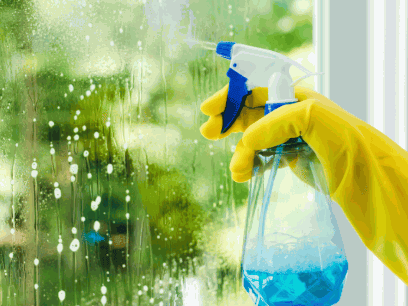
What Is Window Cleaner?
A window cleaner is a specialised cleaning solution or device designed to remove dirt, grime, and streaks from glass surfaces, ensuring a sparkling finish that enhances visibility and aesthetics. Trusted brands like Kärcher and Vileda offer tested window cleaners with remarkable cleaning efficiency.
Utilising modern cleaning tools, such as effective window vacuums and environmentally friendly products, these cleaners not only make the task of cleaning windows easier but also help maintain the longevity of the glass, ensuring quality results.
Trusted brands have developed various formulations and gadgets to cater to different cleaning needs, making window cleaning a doddle for both professional window cleaners and household chores.
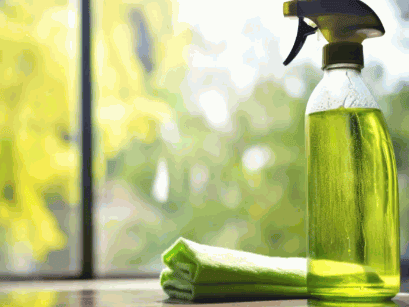
What Makes A Good Window Cleaner?
A good window cleaner is characterised by its cleaning performance, ease of use, and ability to deliver quality results without leaving streaks or residues behind. Quality cleaning tools and cleaning product features enhance the overall experience and visibility in your spaces, making them essential for maintaining a polished look all year round.
When selecting the right tools, it's crucial to consider their user-friendly features, such as ergonomic grips and lightweight designs, which can reduce fatigue during long cleaning sessions, especially when tackling high windows.
Joining online communities can help you access reliable independent reviews from sources like The Independent and Good Housekeeping Institute, allowing you to make informed decisions about the products that suit your specific needs. For instance, brands like Windex and Ecover are renowned for their effectiveness and environmentally friendly ingredients.
Not only do these products cleanse glass surfaces with remarkable clarity, but they also tend to incorporate practical tips for use and cleaning expertise, ensuring that each application delivers optimal results.
Remember to always follow the manufacturer's guidance for the best practices in achieving streak-free finishes and cleaning windows efficiently.
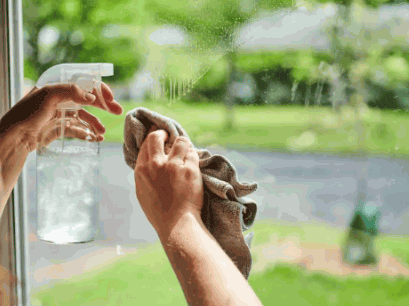
What Ingredients Should Be Avoided In Window Cleaners?
When selecting window cleaners, it’s crucial to avoid certain ingredients that can harm both the environment and the glass surfaces. Products containing harsh chemicals may provide short-term cleaning benefits but can lead to long-term damage and poor cleaning performance. Eco-friendly products that are free from harmful substances not only contribute to safer cleaning techniques but also promote sustainability, making them a preferred choice among trusted brands.
Common harmful ingredients often found in conventional window cleaners include ammonia, which can produce toxic fumes, and phthalates, linked to reproductive health issues. Not only can these chemicals irritate skin and eyes, but they can also negatively impact indoor air quality.
In contrast, eco-friendly alternatives utilise natural ingredients like vinegar and essential oils, which effectively cut through grime while being gentle on surfaces and safe for users and pets alike, promoting cleaning without chemicals.
- Vinegar: A natural degreaser.
- Essential oils: Provide pleasant scents and added cleaning power.
- Biodegradable surfactants: Help lift dirt without leaving toxic residues.
By switching to these safer options, users not only protect their health but also contribute to a healthier planet by choosing eco-friendly products.
What Are The Different Types Of Window Cleaners?
Window cleaners come in various forms, each designed to meet specific cleaning needs, from traditional solutions to innovative window cleaning gadgets. Among the most popular types are portable cleaning tools such as effective window vacuums, which quickly remove moisture and dirt from glass surfaces, and versatile steam cleaners that can also tackle stubborn grime on multiple surfaces, enhancing cleaning efficiency.
Each type offers unique benefits and can be a game-changer for those looking to achieve spotless, sparkling glass with minimal effort, using easy cleaning methods.
Ammonia-based Window Cleaners
Ammonia-based window cleaners are widely recognised for their ability to cut through tough grime and deliver cleaning efficiency, making them a popular choice among both professional and DIY cleaners. These cleaners work by breaking down dirt and residues, often resulting in a streak-free finish on glass surfaces, which is essential for maintaining clear visibility and aesthetics.
While the effectiveness of these cleaners is undeniable, there are certain considerations users should be aware of. For instance, ammonia can produce strong fumes, which may be irritating to the eyes, nose, and throat when inhaled. Safety precautions are crucial; always ensure adequate ventilation when using these products. They can cause damage to certain surfaces, such as wood or fabric, so users must be cautious and read labels carefully.
- Pros: Excellent for tackling stubborn stains.
- Cons: Can be harmful if not used properly.
- Always wear gloves to protect your hands.
- Consider using a diluted solution for everyday cleaning tasks, ensuring cleaning without chemicals.
By implementing these practical cleaning tips, users can maximise the benefits while minimising potential risks associated with ammonia-based cleaners, maintaining cleaning efficiency.
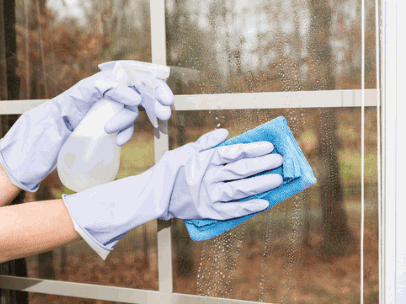
Vinegar-based Window Cleaners
Vinegar-based window cleaners have gained popularity as an eco-friendly alternative for effective cleaning, providing a natural solution that is both safe and efficient. This type of cleaner leverages the acidic properties of vinegar to dissolve dirt and residues, making it a favoured choice for those looking to clean without chemicals while still achieving quality results and sparkling glass.
The effectiveness of vinegar-based cleaners lies in their ability to cut through grime and eliminate streaks, ensuring a crystal-clear finish. Users appreciate how simple it is to prepare these cleaners at home; a common recipe involves mixing one part vinegar with one part water in a spray bottle. Many find that using a microfibre cloth enhances the cleaning process, trapping dust and dirt rather than just pushing it around.
- For optimal results, it is recommended to clean windows on a cloudy day to prevent the solution from drying too quickly.
- Some even add a few drops of washing-up liquid to their mixture for extra cleaning power.
Those who have made the switch to vinegar-based solutions often share their satisfaction, noting improved air quality and an overall fresh feeling in their homes. With these benefits, it is easy to see why this method has gained a loyal following.
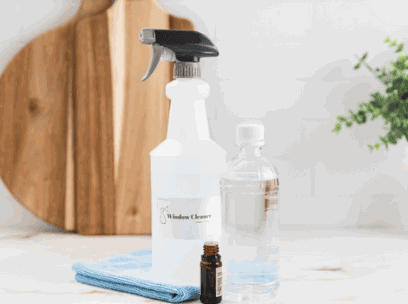
Natural/ DIY Window Cleaners
Natural or DIY window cleaners offer an affordable cleaning option that allows users to create effective cleaning solutions using household items, fostering creativity and sustainability. Common ingredients such as bicarbonate of soda, lemon juice, and cornflour can be combined to develop cleaning techniques that rival commercial products in performance while being eco-friendly and economical.
By opting for these environmentally friendly alternatives, individuals not only reduce their exposure to harsh chemicals found in many traditional products but also contribute to a greener planet. DIY window cleaners are simple to make, allowing everyone to tailor their cleaning solutions based on personal preferences and needs.
Here are some straightforward recipes:
- Basic Vinegar Solution: Mix equal parts of water and white vinegar in a spray bottle. This is great for cutting through grime.
- Lemon Power Cleaner: Combine water with the juice of one lemon and a teaspoon of cornflour for a streak-free shine.
- Essential Oil Infusion: Add a few drops of essential oils such as lavender or tea tree to your vinegar mix for a pleasant scent and added antibacterial properties.
Users can evaluate the effectiveness of these homemade solutions by comparing them directly with their shop-bought counterparts. A quick test on various window surfaces will reveal their cleaning prowess, all while being an enjoyable DIY project.
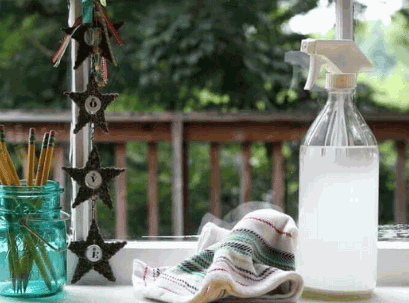
What Are The Best Window Cleaners For Different Types Of Windows?
Selecting the best window cleaners for different types of windows is essential to ensure effective cleaning and maintenance, as various glass surfaces require tailored approaches for optimal results, using the best window cleaning tools.
Whether you are dealing with standard glass windows, tinted glass, or hard-to-reach areas, understanding the specific needs of each type will help you achieve sparkling glass and enhance your home’s aesthetic appeal with the right cleaning devices.
Professional window cleaners often rely on specialised products and techniques that can significantly improve cleaning efficiency and effectiveness, leveraging modern cleaning tools.
Best Window Cleaner For Glass Windows
The best window cleaner for glass windows is often a solution that combines effective cleaning performance with ease of use, ensuring streak-free results. Popular options include commercial products designed specifically for cleaning glass surfaces, which often feature user-friendly designs that enhance their application and effectiveness in removing dirt and fingerprints, avoiding cleaning residues.
Many users rave about the effectiveness of products like the Mr. Clean Magic Eraser, known for its ability to tackle tough stains without harsh chemicals. Cleaning reviews online frequently highlight its cleaning product recommendations.
- Another standout is Windex, famed for its streak-free shine and availability in convenient spray bottles. It's often mentioned in cleaning reviews and evaluations.
- For a more eco-friendly choice, consider Method's Glass Cleaner, which utilises plant-based ingredients that users appreciate for both performance and sustainability, making it a powerful window cleaner.
These products not only streamline the cleaning process but also receive high marks in user reviews for their quick-drying capabilities and pleasant scents, making routine cleaning less of a chore. Affordable cleaning options and cleaning product evaluations often highlight their benefits.
Find out more: How To Clean Window Glass
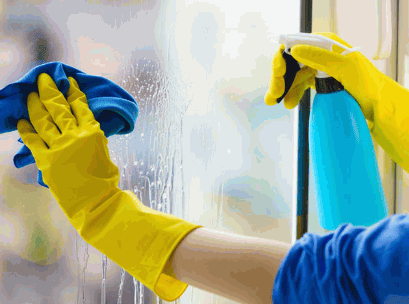
Best Window Cleaner For Tinted Windows
For tinted windows, the best window cleaners are those formulated to clean effectively without damaging the film, ensuring a clear view and maintaining the integrity of the tint. Trusted brands, such as Vileda and Ecover, often provide specialised products that cater to the unique needs of tinted surfaces, combining gentle formulas with effective cleaning techniques.
These cleaners not only enhance the appearance of the windows but also provide a streak-free finish that is vital for optimal visibility while driving. Users often share their satisfaction with products specifically designed for tinted windows, noting how well they remove dirt and grime without leaving any harmful residues.
Here are some key points to consider when selecting these specialised cleaners:
- pH-balanced formulas help preserve the tint’s adhesive and quality.
- Apply with a soft microfibre cloth to prevent scratches.
- Avoid ammonia-based products, which can deteriorate the tint over time.
Many car enthusiasts agree that using such recommended products not only aids long-term maintenance but also enhances the overall aesthetic of their vehicles. Cleaning reviews often commend these products for their cleaning performance tests and high ratings on platforms like Amazon and Argos.
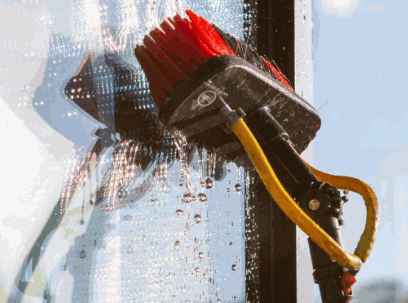
Best Window Cleaner For Mirrors
In terms of cleaning mirrors, the best window cleaners are those that offer a streak-free shine without the need for harsh chemicals, making them safe for everyday use. Many user-friendly products are designed specifically for mirrors, ensuring that users can maintain their reflective surfaces effortlessly and without damaging the glass. Cleaning product choices from brands like Astonish and Mr Muscle are popular among consumers.
To achieve the ideal cleaning experience, it’s worth considering products that boast features like a no-drip formula and easy spray application. These attributes not only make the process smoother but also help in preventing excess liquid from running down the glass, which can lead to streaks. Easy-to-use products like those from Kärcher are often recommended for this purpose.
Here are some reputable options:
- Eco-Friendly Cleaners: These cleaners are not only gentle on the environment but also ensure safety for families and pets.
- Foaming Sprays: A foaming action can better adhere to surfaces, allowing for enhanced cleaning without the mess.
- Microfibre Cloths: Pairing a great cleaner with high-quality cloths can remove dirt and grime effectively, securing that pristine finish.
By selecting the right products, maintaining your mirrors will become a straightforward and efficient task, ensuring that they continue to enhance your space.
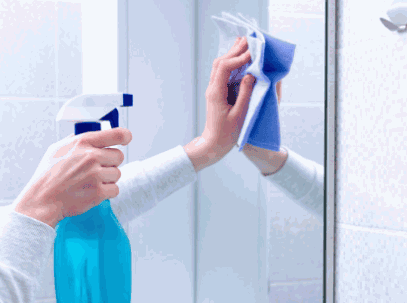
Best Window Cleaner For Hard-to-Reach Windows
For hard-to-reach windows, the best window cleaners often incorporate portable cleaning tools that enable effective access and cleaning from challenging angles. These solutions are designed for convenience and efficiency, allowing both professional window cleaners and homeowners to achieve quality results without compromising safety.
Particularly popular among DIY enthusiasts and professionals alike are products with extendable handles and rotating heads. These features allow users to manoeuvre effortlessly around corners and tight spaces, making tedious cleaning tasks a breeze. Cleaning attachments from brands like Leifheit and Beldray are often recommended for their effectiveness.
- For instance, telescopic window cleaning poles can extend to impressive lengths, allowing one to clean high-rise buildings without the need for scaffolding.
- Innovative squeegee designs that integrate scrubbers make the process even smoother, combining scrubbing and drying in one go.
User experiences often highlight the effectiveness of these tools in maintaining sparkling clear windows, with many noting that the portability of cleaning kits reinforces their ease of use.
Practical tips include using distilled water for streak-free shine and testing new tools on less visible windows to perfect techniques before tackling more prominent displays.
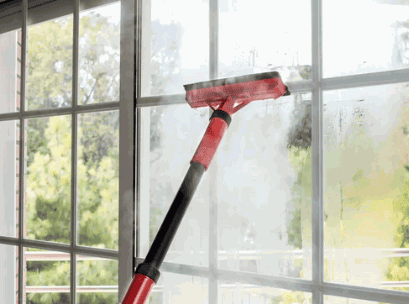
What Are The Safety Measures When Using Window Cleaners?
When using window cleaners, it is vital to adhere to safety measures that protect both the user and the environment, ensuring a safe and effective cleaning experience. Wearing appropriate protective gear, such as gloves and goggles, can safeguard against potential chemical exposure while choosing eco-friendly products can minimise health risks and environmental impact.
Understanding user-friendly features of cleaning supplies can also enhance safety during use.
Proper Ventilation
Ensuring proper ventilation when using window cleaners is essential to minimise the inhalation of potentially harmful fumes and to maintain a safe indoor environment. Good airflow helps dissipate any chemical odours and reduces the risk of respiratory irritation, making it a vital component of effective cleaning techniques.
Maintaining a well-ventilated space is not just a practical consideration but also a key factor in promoting health and safety during the cleaning process. Ventilation is crucial as it allows fresh air to circulate, which helps to dilute any concentrated fumes.
Here are some practical tips to ensure good airflow:
- Open windows and doors to create cross-ventilation.
- Use fans to promote airflow, directing them towards the window to push out contaminated air.
- Consider using air purifiers equipped with HEPA filters that can help capture airborne toxins.
When choosing window cleaners, opt for products labelled as non-toxic or eco-friendly, as these typically have lower levels of harmful chemicals. It’s also a wise idea to test any new product in a small area first to gauge its impact on air quality.
Protective Gear
Wearing protective gear, such as gloves and goggles, is a crucial safety measure when using window cleaners to shield against skin and eye irritation caused by chemical exposure. This simple precaution not only safeguards health but also ensures a more comfortable cleaning experience.
To enhance safety while maintaining your cleaning routine, consider incorporating additional protective items. For instance, using a long-sleeved shirt can protect your skin from drips and splashes, while non-slip footwear ensures stability during high-altitude tasks.
When selecting such gear, keep the following tips in mind:
- Choose gloves made from materials resistant to chemicals, such as nitrile or latex.
- Select goggles that provide a secure fit and prevent any liquids from breaching the eyewear.
- Consider using a face mask if the cleaning solution has strong fumes, ensuring a comfortable atmosphere.
Paying attention to the specific cleaning products being used is essential, as some may require more robust protective measures than others.
Proper Storage Of Window Cleaners
Proper storage of window cleaners is essential to maintain their effectiveness and to ensure safety, especially in households with children or pets. Storing cleaning supplies in a cool, dry place and using child-proof containers can minimise risks and prolong the life of eco-friendly products.
Maintaining an optimal temperature range is crucial. Ideally, window cleaners should be kept between 10°C to 27°C to prevent any chemical degradation or loss of effectiveness. It's wise to check labels for specific instructions on storage.
- Always store these supplies out of reach of children, preferably in locked cupboards.
- Categorise cleaning products to avoid confusion, separating eco-friendly options from harsher chemicals.
- Consider using refillable containers to reduce waste and promote environmental consciousness.
Taking these precautions not only ensures a safer environment but also supports the longevity of the products used.
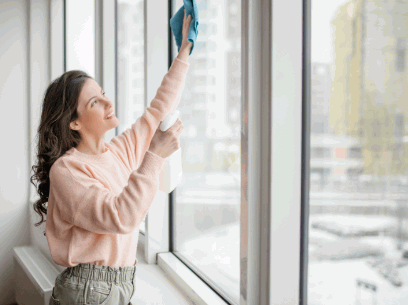
How To Make Your Own Window Cleaner?
Making your own window cleaner is an affordable option that allows you to customise your cleaning solution to meet specific needs while using common household ingredients. Many effective recipes can be created using items like vinegar, lemon juice, or bicarbonate of soda, providing a natural cleaning solution that is both cost-effective and environmentally friendly. Cleaning with vinegar is particularly highlighted by The Independent for its versatility.
Emphasising effective cleaning techniques can help ensure that your DIY cleaner delivers quality results.
Vinegar And Water Solution: A Classic Cleaning Method
A vinegar and water solution is one of the simplest and most effective DIY window cleaners, leveraging the natural cleaning power of vinegar to dissolve dirt and grime without the need for harsh chemicals. This eco-friendly product is not only safe for the environment but also easy to make and use, ensuring that your windows shine with minimal effort. Popular brands like Method and Ecover also offer eco-friendly alternatives.
To create the perfect cleaning mixture, combine equal parts of white vinegar and water, typically one cup of each, in a spray bottle. This simple ratio makes it easy to remember and mix, providing a potent yet gentle solution.
When applying the mixture, it’s best to use a microfibre cloth or a squeegee, as these tools help minimise streaks and ensure a thorough clean without scratching the glass. For optimal results, consider cleaning your windows on a cloudy day to prevent the solution from drying too quickly, which can lead to streaking.
By following these best practices, you can enjoy sparkling windows that truly enhance the beauty of your spaces.
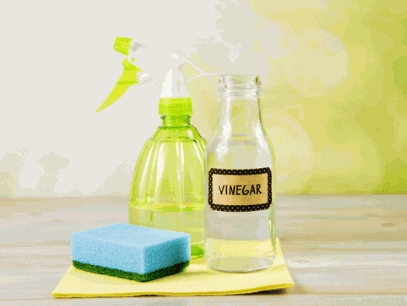
Lemon Juice And Water Solution: A Popular Window Cleaning Method
A lemon juice and water solution is another effective DIY window cleaner that harnesses the natural acidity of lemons to cut through grease and grime while leaving a fresh scent. This easy-to-make cleaner not only offers effective cleaning properties but also serves as a delightful aromatic addition to your cleaning routine. The Good Housekeeping Institute often recommends natural options like this.
To create this powerhouse cleaner, simply mix one part lemon juice with two parts water in a spray bottle. The citric acid in lemon juice not only helps to break down stubborn stains but also acts as a natural antibacterial agent, making this solution both safe and eco-friendly.
When applying the solution, use a microfibre cloth to achieve streak-free results. Lightly dampen the cloth with the mixture and wipe down the windows, making sure to follow a zigzag pattern to cover the surface evenly.
Here are some:
- Tips for Application:
- Apply the solution on cool surfaces to prevent rapid evaporation.
- Wipe with a clean, dry cloth afterward for a brilliant shine.
In comparison to traditional cleaning products, this lemon solution stands out for its affordability and lack of harsh chemicals, ensuring a clean environment without compromising indoor air quality. Retailers such as Amazon, Argos, and Robert Dyas often provide similar natural cleaning agents.
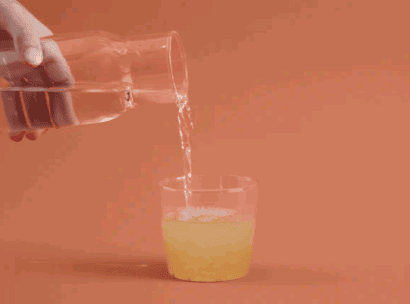
Baking Soda And Water Solution: A Trusted Technique For Cleaning Streak-Free
A bicarbonate of soda and water solution serves as an excellent DIY window cleaner, utilising the mild abrasive properties of bicarbonate of soda to scrub away dirt and residues without scratching the glass. This affordable cleaning option is particularly effective for tackling tough stains and can be combined with other natural ingredients for enhanced cleaning performance. Brands like Mr Muscle and Astonish offer similar effective solutions.
To prepare this cleaning mixture, simply mix three tablespoons of bicarbonate of soda with one litre of warm water in a spray bottle, creating a paste-like consistency that can be adapted based on the required cleaning strength. For added effectiveness, consider incorporating vinegar, which not only amplifies the cleaning power but also leaves windows streak-free.
When applying the solution, follow these tips to maximise results:
- Dampen a cloth or sponge with the mixture before scrubbing to ensure the bicarbonate of soda adheres properly to tougher grime.
- Use a separate microfibre cloth to wipe the surface dry, as this can significantly reduce streaking.
- For outdoor windows, clean during cooler parts of the day to prevent the solution from drying too quickly.
This versatile method is not only easy to prepare but also environmentally friendly, making it a go-to choice for households aiming for a sparkling finish without harsh chemicals. Consider tools from Kärcher and Vileda for optimal application.
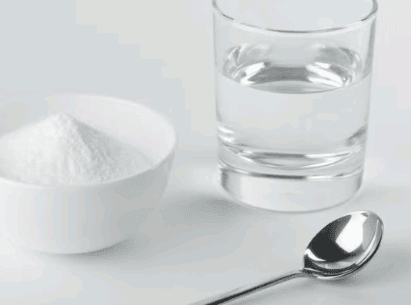
Window blinds, such as Venetian blinds and roller blinds, can transform a room’s ambiance, but they often gather dust and grime over time, emphasizing the need for regular cleaning chores like vacuuming floors and dusting blinds.
Keeping them clean is not just about aesthetics; it’s essential for maintaining air quality and prolonging their lifespan.
This article explores the importance of cleaning window blinds, the consequences of neglecting them, and a variety of types available, including cellular shades and Faux Wood blinds.
You'll also find the materials needed, a straightforward step-by-step cleaning guide, and helpful cleaning tips for ongoing maintenance, like using dish soap and dishwashing liquid.
Dive in to ensure your blinds stay fresh and inviting!
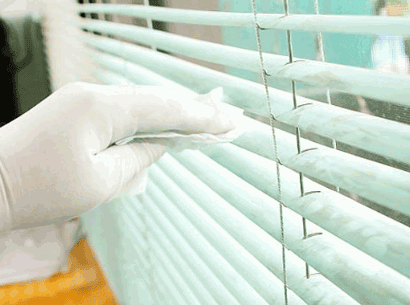
Why Is It Important To Clean Window Blinds?
Cleaning window blinds is an essential household chore that not only enhances the aesthetics of your home but also contributes to a healthier indoor environment. Over time, dust, allergens, and dirt accumulate on blinds, especially in areas like Queens, which may lead to respiratory issues and reduced air quality. Regular tasks such as cleaning windows and washing laundry help keep your environment clean.
According to the Good Housekeeping Institute, regular cleaning is crucial to maintain the function and appearance of various types of blinds such as wooden blinds and fabric blinds. Additionally, a clean living space reflects well on your personal hygiene and creates a welcoming atmosphere for guests.
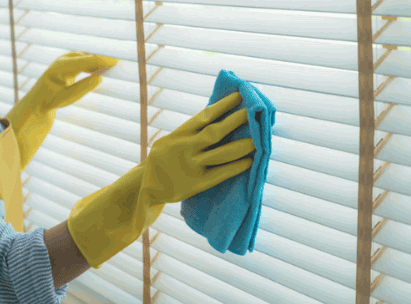
What Happens If You Don't Clean Window Blinds?
Neglecting to clean window blinds can lead to the accumulation of dirt and allergens, which can pose health risks for individuals with allergies or respiratory issues, complicating their everyday lives and potentially triggering serious health conditions that require medical attention and ongoing management.
For example, those with asthma may find their symptoms exacerbated by the presence of dust mites and mould spores, both of which thrive in dirty blinds. This makes it essential for everyone, especially allergy sufferers, to maintain a regular cleaning schedule.
Here are some common cleaning methods that can effectively remove stubborn stains and ensure a healthier living environment:
- Dusting with a microfibre cloth to capture particles instead of spreading them around.
- Using a vacuum attachment to reach the intricacies of the blinds easily.
- Employing a mixture of warm water and mild detergent for deeper stains when necessary.
Consistent cleaning not only keeps the blinds looking great but also minimises allergens in the air, reinforcing the importance of employing proper cleaning techniques.
Types Of Window Blinds
There are various types of window blinds available, each with its unique characteristics, including:
- vertical blinds
- horizontal blinds
- wooden blinds
- fabric blinds
These require tailored cleaning techniques and specific cleaning products to maintain their appearance and functionality.
Vertical Blinds
Vertical blinds, commonly used for larger windows and sliding doors, require specific cleaning products and techniques to effectively remove dust and dirt, ensuring they maintain their aesthetic appeal and functional integrity over time. Brands like Hillarys and Greenworks offer solutions for these tasks.
In terms of cleaning vertical blinds, choosing the right products is essential. It is advisable to use mild detergents mixed with warm water, along with soft cloths or sponges, to avoid damaging the material.
- Routine maintenance is key; dusting should occur every few weeks, while deeper cleaning might be needed every few months, depending on environmental factors.
- For a quick dust removal, a microfibre duster or a vacuum with a brush attachment can be effective.
Consider using specialised blind cleaning solutions which can help eliminate stubborn grime without harming the texture of the blinds.
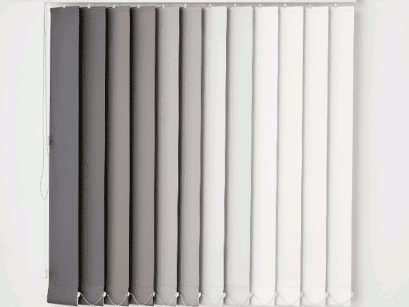
Horizontal Blinds
Horizontal blinds, a popular choice for many households, allow for easy dusting and can be maintained with simple cleaning techniques that ensure they remain functional and aesthetically pleasing. By implementing these techniques, one can prolong the lifespan of the blinds, reduce allergens, and keep their living space looking fresh and inviting. Consider using products like Swiffer and Dawn Powerwash Spray for effective cleaning.
To start, gather the necessary materials:
- Microfibre cloths
- Wood or vinyl cleaner
- Warm, soapy water
- A soft brush or vacuum with a brush attachment
Before cleaning, it is advisable to tilt the blinds open, making it easier to reach each slat. Gently wipe down each slat with a microfibre cloth dampened in the soapy water solution, ensuring you catch any dust and debris that may have accumulated.
For stubborn stains, opt for a specialised cleaner suited to the material of the blinds. To prevent future build-up, consider a quick dusting session every week or two.
These simple yet effective habits not only maintain the appearance of horizontal blinds but also keep the environment healthier for you and your family.
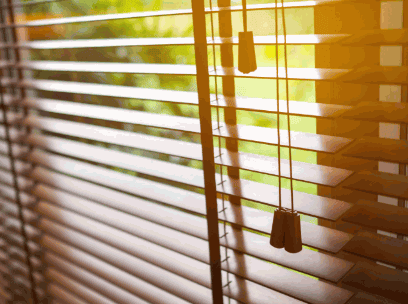
Wooden Blinds
Wooden blinds require a delicate cleaning process to preserve their finish while effectively removing dust and allergens.
To maintain their beauty and functionality, it is crucial to use appropriate cleaning methods and products tailored specifically for wood blinds. Unlike synthetic materials, wood can be sensitive to harsh chemicals and excessive moisture, so using gentle products like those recommended by Architectural Digest is advised.
Start by dusting the blinds with a microfiber cloth or a duster, which will effectively capture dust without scratching the surface. For a deeper clean, use a solution of mild washing-up liquid and warm water, applying it sparingly with a soft cloth. Remember to avoid soaking the wood, as excess water can warp or damage it.
- Use furniture polish occasionally for added shine and protection.
- Avoid commercial cleaners containing ammonia or bleach.
Regular maintenance not only enhances their appearance but also prolongs their lifespan, ensuring your investment remains worthwhile.

Fabric Blinds
Fabric blinds can attract dust and stubborn stains, making regular cleaning essential to maintaining their appearance and ensuring a lasting, fresh look that enhances your home’s aesthetic.
To effectively care for these window treatments, consider using a combination of gentle cleaning solutions and regular maintenance routines, including employing techniques recommended by experts like Yvonne Keal from the Good Housekeeping Institute.
- Begin with a soft brush attachment on a vacuum cleaner or a microfibre cloth to remove loose dust particles.
- For stubborn stains, a mixture of mild soap and lukewarm water can be applied with a soft cloth; always test a small area first to prevent damage.
- When using any cleaning solution, it's advisable to follow the manufacturer’s guidelines for the fabric type.
It’s beneficial to use protective measures, such as avoiding placing blinds in direct sunlight for long periods to prevent fading and discolouration. In doing so, one can prolong the lifespan of their fabric blinds while keeping them looking pristine, as recommended by experts from Hofstra University.
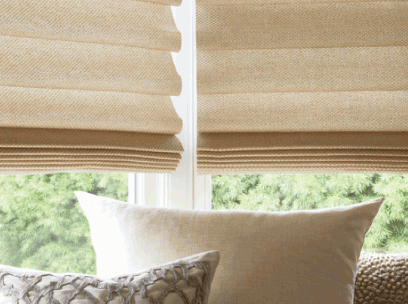
Materials Needed For Cleaning Window Blinds
To effectively clean window blinds, you will need essential materials such as a vacuum cleaner, microfibre cloths, and cleaning solutions like vinegar and washing-up liquid, which provide a comprehensive cleaning approach.
Take a look: What Is The Best Window Cleaner
Vacuum Cleaner
A vacuum cleaner is an effective tool for quickly removing dust from blinds, especially when fitted with a brush attachment, making it a preferred choice for cleaning methods.
Using a vacuum cleaner not only saves time but also enhances efficiency in maintaining the cleanliness of your blinds.
Incorporating the right vacuum attachment can significantly impact results. Here are some tips for choosing the best option:
- Choose a brush attachment specifically designed for delicate surfaces. This helps in preventing damage while ensuring a thorough cleaning.
- Consider a handheld vacuum for tighter spaces, allowing you to reach those tricky angles with ease.
- Look for adjustable suction settings to cater to various materials and dust levels.
By considering these factors, the efficiency of your cleaning routine will be greatly enhanced, providing a fresh and dust-free environment.
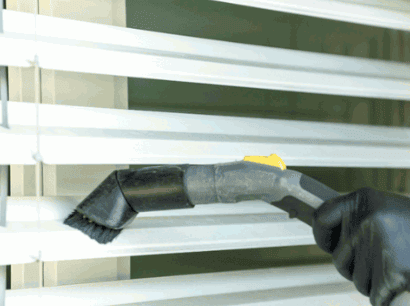
Microfiber Cloth
Microfibre cloths are ideal for dusting and wiping down window blinds due to their ability to trap dust and allergens effectively without scratching surfaces.
This unique material consists of tiny fibres that create a static charge, helping to lift dirt and debris away rather than spreading it around. When using microfibre cloths for cleaning blinds, it is beneficial to adopt a few simple application methods:
- First, gently wrap the cloth around your fingers to create a soft tool that fits snugly into the slats, allowing for efficient cleaning.
- Next, lightly dampen the cloth with a cleaning solution to enhance its dust-attracting properties, preventing finer particles from drifting back into the air.
- For optimal results, ensure cleaning from top to bottom, as this strategy minimises the redistribution of dust.
Maintenance of the microfibre cloths is equally crucial. Wash them in cold water, avoiding fabric conditioners as they can diminish the cloth's effectiveness. Regular cleaning will ensure they maintain their superior dust-trapping capabilities, making them a fantastic and eco-friendly choice for household upkeep.
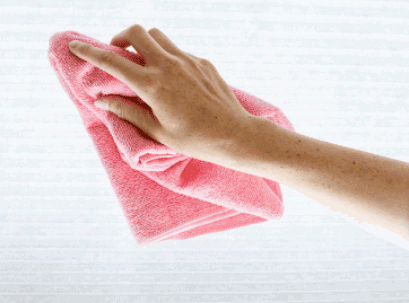
Vinegar Solution
A vinegar solution is an excellent natural cleaner for window blinds, effectively cutting through grime and leaving surfaces streak-free. Not only does this affordable cleaning method minimise the need for harsh chemicals, but it also ensures a safer environment for families and pets alike.
To create the perfect vinegar solution, combine equal parts of white vinegar and water in a spray bottle. This simple mixture can tackle various types of blinds, including fabric, aluminium, and vinyl, making it versatile.
- Gently dust the blinds using a microfibre cloth to remove loose dirt.
- Spray the vinegar solution lightly on the blinds.
- Wipe down each slat with a clean cloth, focusing on any stubborn spots.
The natural acidity of vinegar not only cleans but also acts as a disinfectant, enhancing the overall cleanliness of your living space.
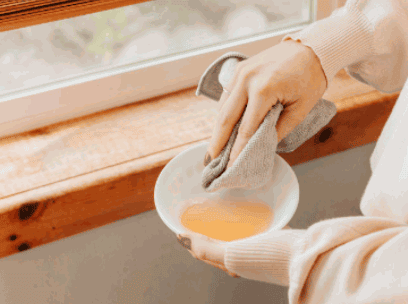
Dish Soap Solution
A washing-up liquid solution can effectively target stubborn stains and provide a thorough cleaning for various types of window blinds.
Creating a washing-up liquid solution is quite simple and can lead to remarkable results. Begin by mixing a few drops of a gentle washing-up liquid with warm water in a bucket. The warm water helps to dissolve grease and dirt more efficiently, making it easier to lift stubborn stains from the blinds.
In terms of application, it’s advisable to use a soft cloth or sponge dipped in the soapy solution, ensuring it’s not overly saturated to prevent drippage. Gently wipe each slat, paying extra attention to any spots that appear to be particularly dirty.
- For tough grime, allow the solution to sit for a minute before scrubbing.
- Always test a small hidden area first to ensure the blinds' material is compatible with the solution.
After cleaning, wipe with a damp cloth to remove any leftover soap and let the blinds air dry for a sparkling finish.
Step-by-Step Guide For Cleaning Window Blinds
This step-by-step guide will help you through the entire cleaning process for window blinds, ensuring that you achieve optimal cleanliness while effectively managing your cleaning tasks.
Dusting The Blinds
The first step in cleaning window blinds is dusting, which can be effectively done using microfiber cloths to capture dust and allergens.
To achieve optimal results, it's essential to approach the task methodically. Begin by selecting a clean microfibre cloth that is slightly damp to enhance its dust-attracting capabilities. Hold the slats of the blinds firmly with one hand while using the cloth in a gentle, wiping motion with the other. This technique ensures that any accumulated dirt is effectively caught and removed without leaving behind residue.
- Tips for thorough cleaning from Yvonne Keal at Hillarys:
- Start from the top and work your way down to avoid resettling dust on already cleaned areas.
- For horizontal blinds, wipe each slat individually, repositioning the cloth to cover all surfaces.
- Use a ladder or step stool if needed to reach higher blinds safely.
Following these guidelines will help keep window blinds looking pristine while minimising allergens in your home. Consider using a Swiffer for quick touch-ups.
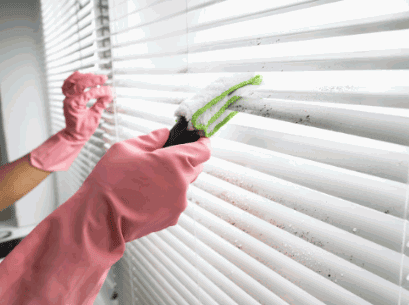
Vacuuming The Blinds With Tools
After dusting, vacuuming the blinds with a vacuum cleaner will remove any remaining dust and debris, providing a thorough cleaning.
Utilising a vacuum cleaner not only enhances the aesthetic of your blinds but also contributes to a healthier living environment. Employing the right attachments is crucial; consider using a crevice tool to effectively reach into corners and crevices where dust tends to accumulate.
Here are some techniques to ensure a meticulous cleaning process:
- Turn the blinds: Angle them fully open to allow for easy access.
- Use the right suction: Adjust the settings on your vacuum to avoid damaging delicate materials.
- Ventilate: Open nearby windows to circulate air, making it easier to see dust floating away.
Regular maintenance, including vacuuming, will prolong the life of the blinds and keep them looking as good as new.
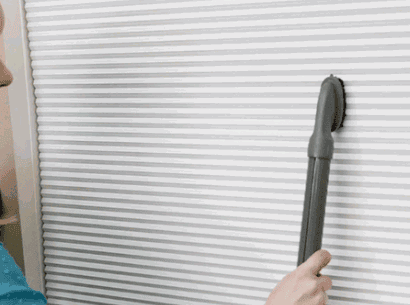
Wiping Down With Vinegar Solution
Using a vinegar solution is a crucial step in the cleaning process, as it helps dissolve grime and leaves the blinds sparkling clean, valuable for cleaning Venetian blinds, Faux Wood blinds, or Pleated blinds, enabling homeowners to maintain the fresh and inviting indoor environment without relying on harsh chemicals.
To properly apply the vinegar solution to the blinds, mix equal parts water and white vinegar in a spray bottle. Lightly mist the blinds, focusing on the areas with more buildup. Use a soft cloth or a microfibre duster to gently wipe each slat, following the direction of the blinds. The vinegar solution not only cleans but also eliminates odours, leaving your home smelling fresh.
After cleaning, it’s important to rinse or dry the blinds to prevent any vinegar smell from lingering. Here are some tips from Jodhaira at Hofstra University:
- Wipe with a damp cloth to remove any excess vinegar.
- Allow the blinds to air dry by leaving them open.
- If necessary, use a clean, dry cloth to speed up the drying process.
By following these steps, you can enjoy the multitude of benefits this natural cleaner offers while ensuring your blinds regain their pristine condition.
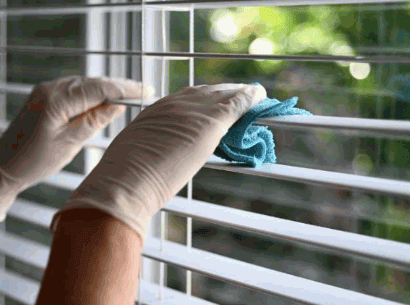
Deep Cleaning With Dish Soap Solution
For a thorough clean, especially for stubborn stains, a washing-up liquid solution can be applied to deep clean the blinds.
This simple yet effective method not only revitalises the appearance of blinds but also aids in maintaining their longevity. To begin, prepare a solution by mixing warm water with a few drops of your favourite washing-up liquid or Dawn Powerwash Spray. The warm water helps to loosen any grime, while the liquid cuts through grease.
- Soaking Method: For more stubborn dirt, use a microfibre cloth soaked in the mixture.
- Gently wipe the surfaces, allowing the solution to penetrate the stains.
- After soaking for several minutes, rinse with clean water using another cloth.
For lighter cleaning needs, a simple rinse with the soap solution followed by thorough drying can work wonders. Always ensure the blinds are completely dry to prevent any moisture damage.
Tips For Maintaining Clean Window Blinds
Maintaining clean window blinds is easier with consistent cleaning tips and a routine that incorporates regular dusting and quick cleaning methods. Consider products like Greenworks or Dishwashing liquid for effective maintenance.
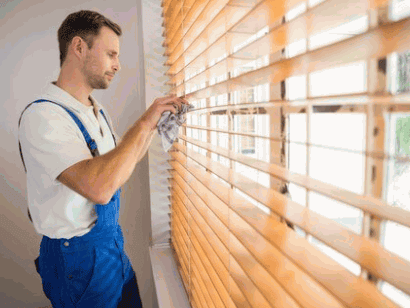
Cleaning windows goes beyond mere aesthetics; it enhances your home's appearance and prolongs the life of your window frames.
Whether you're looking to banish streaks or maintain clarity, understanding the right tools and techniques is essential.
This guide covers the importance of window cleaning, the best tools to use, and step-by-step instructions for various window types, ensuring you avoid common cleaning mistakes.
Find window cleaning tips for maintaining that sparkling finish, ensuring your windows stay pristine all year round.
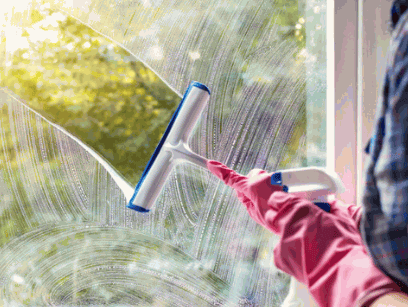
Why Is It Important To Clean Window Glass?
Cleaning window glass is essential not only for aesthetic reasons but also for improving natural light, enhancing your home's ambience, and extending the lifespan of your windows. Dirty windows can accumulate grime, dust, and fingerprints, which can obstruct your view and negatively impact the overall appearance of your home.
Regular cleaning helps maintain window integrity, prevents deterioration, and ensures proper functionality of window treatments. Furthermore, using effective cleaners like distilled vinegar or a baking soda mixture can promote safe cleaning practices, making it a crucial part of home cleaning routines.
Learn more: How To Clean Window Blinds
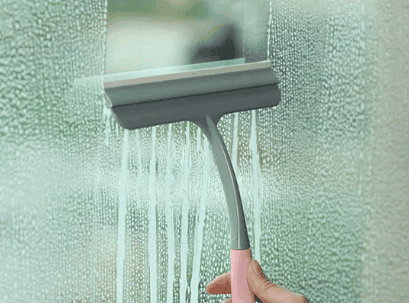
What Tools Do You Need For Cleaning Window Glass?
To effectively clean window glass, having the right tools is crucial. Essential tools include a reliable glass cleaner, which can be a commercial product or a homemade solution using distilled vinegar, baking soda, or lemon juice, and cleaning equipment like a squeegee for a streak-free finish.
Additionally, a microfibre cloth is essential for dust removal and polishing glass surfaces without leaving fluff behind, perfect for achieving window shine.
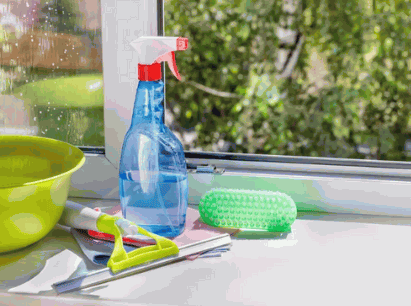
What Are The Different Types Of Window Glass Cleaners?
Regarding cleaning window glass, several types of cleaners are available, each with its unique benefits. Commercial glass cleaners are widely used for their convenience, but many homeowners opt for natural alternatives like vinegar cleaner or rubbing alcohol to achieve a streak-free finish while ensuring safe cleaning practices. These DIY cleaners, made from household items, are not only cost-effective but also environmentally friendly, providing effective cleaning solutions without harsh chemicals, such as Invisible Glass Cleaner or E-Cloth Window Cleaning Kit.
In comparing the two approaches, it's essential to consider factors such as effectiveness and safety.
While commercial products often contain powerful solvents and fragrances that can swiftly tackle tough grime, they may irritate sensitive skin or respiratory systems. On the other hand, homemade cleaners typically utilise ingredients like vinegar, bicarbonate of soda, and water, which are generally safe and non-toxic.
- Pros of Commercial Cleaners:
- Quick and efficient
- Readily available
- Designed specifically for tough stains
- Cons of Commercial Cleaners:
- Contains harsh chemicals
- Can cause allergies or irritations
- More expensive long-term
- Pros of Homemade Cleaners:
- Eco-friendly
- Inexpensive and effective
- Customise your fragrance
- Cons of Homemade Cleaners:
- It may require more elbow grease
- Not always effective on heavily soiled surfaces
Ultimately, the choice between commercial and homemade cleaners depends on individual preferences, cleaning needs, and whether a cleaning expert's advice is followed.
What Are The Essential Cleaning Tools?
Essential cleaning tools for window maintenance include a high-quality squeegee, which is crucial for achieving a streak-free finish, and microfibre cloths that effectively remove dust and fingerprints from glass surfaces. Having a variety of cleaning supplies on hand, such as vinegar solution or baking soda paste, gives you the power to you to tackle different cleaning tasks efficiently.
To ensure a comprehensive approach, consider these additional essential tools:
- Bucket: Essential for holding cleaning solutions, a sturdy bucket aids in mixing and transporting your cleaning supplies, preventing spills.
- Scrubber: A soft-bristle scrubber helps to loosen dirt and grime before the squeegee takes over, ensuring a more thorough clean.
- Extendable Pole: For hard-to-reach windows, an extendable pole with an attachment can save considerable time and effort.
- Window Cleaning Solution: A dedicated solution, either commercial or homemade, ensures the best results as it cuts through grease without leaving residue.
Incorporating these tools into your routine not only promotes a polished appearance but also enhances the lifespan of the glass, making each cleaning session more effective. By utilising these essential tools, the quest for spotless windows becomes a manageable task that aligns with advice from the Good Housekeeping Institute.
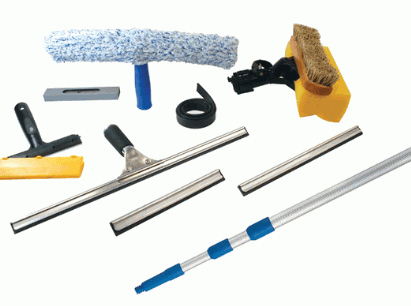
How To Prepare For Cleaning Window Glass?
Preparing to clean window glass involves a systematic approach to ensure efficiency and optimal results. Start by gathering all necessary cleaning supplies and tools, including a squeegee, microfibre cloths, and your chosen cleaning solution, whether it is a vinegar mixture, soapy solution, or commercial glass cleaner.
Additionally, remove any items obstructing access to the windows, such as window screens or furniture, to facilitate a thorough cleaning process that adheres to safe cleaning practices.
What Are The Safety Measures To Take?
Safety measures are crucial when cleaning window glass to prevent accidents and ensure effective cleaning. Always ensure that you have a firm footing, use a stable ladder or platform if cleaning high windows, and avoid using harsh chemicals that could harm your health or the environment. Opt for a vinegar cleaner or other safe cleaning solutions made from household items like cornstarch, and wear gloves if necessary to protect your skin.
Plus a sturdy ladder, consider using a spotter to hold the base or to provide additional support, which can significantly enhance window cleaning safety. Always check the ladder's condition before use, ensuring that it is free from any defects.
Regarding chemical handling, prioritize those that are eco-friendly and non-toxic; this not only protects your wellbeing but also maintains a safer environment for all.
- Wear protective eyewear when spraying any cleaning solution.
- Ensure adequate ventilation if using any chemical products.
- Store all cleaning supplies safely, out of reach of children and pets.
Physical safety is just as paramount; remember to lift heavy cleaning tools with your legs and not your back. By following these basic precautions and adopting safer cleaning solutions, window maintenance can become a much more enjoyable and hazard-free task.
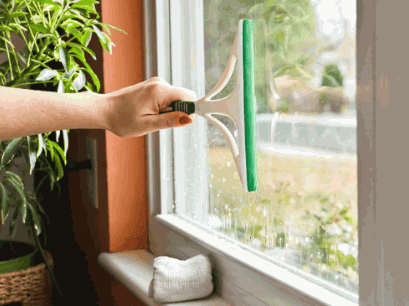
What Is The Best Time To Clean Window Glass?
Utilising advice from experts can enhance your cleaning strategy.
The best time to clean window glass is typically on a cloudy day, as this prevents direct sunlight from causing streaks and allows for better visibility of smudges and dirt. Early morning or late afternoon can also be ideal, as temperatures are cooler, reducing the chances of cleaning solutions drying too quickly during the cleaning process. This timing aligns with the effective cleaning methods recommended by cleaning experts.
Opting for these specific conditions can significantly improve the overall outcome of the task. When window cleaning occurs on a cloudy day, the absence of harsh sunlight makes smudges and other imperfections more easily noticeable, thereby enabling a thorough and effective cleaning. During early morning hours or late afternoons, the mild temperatures not only enhance the performance of cleaning products but also safeguard the surfaces from extreme temperature fluctuations that could affect the integrity of the glass.
- Humidity levels also play a crucial role; moderate humidity can help maintain wetness, ensuring that the cleaning solution works its magic.
- Avoiding windy conditions prevents dust and debris from settling on freshly cleaned windows.
By strategically timing the cleaning process, one can ensure that every window shines beautifully, providing a clearer view and enhancing kerb appeal.
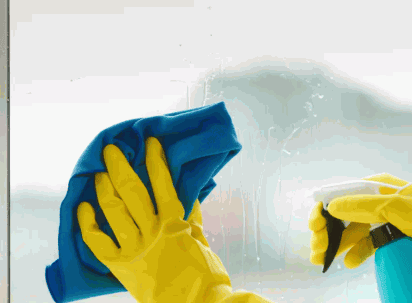
How To Clean Window Glass Step-by-Step?
Cleaning window glass step-by-step ensures thoroughness and a streak-free finish, making the process efficient and effective.
- Start by removing any dirt or debris from the window panes using a dry microfibre cloth.
- Prepare a cleaning solution, which could be a vinegar mixture or a soapy solution.
- Apply the cleaner to the glass.
- Scrub gently with a sponge or cloth.
- Rinse thoroughly with clean water.
- Finish by drying the glass with a squeegee or soft cloth.
Step 1: Remove Any Dirt Or Debris From The Window
The first step in cleaning window glass is to remove any dirt or debris accumulated on the window panes. Using a dry microfibre cloth or a soft brush, gently wipe away loose dust, cobwebs, and other debris to prepare the surface for cleaning.
Not only does this preliminary action ensure a clearer view, but it also plays a crucial role in preventing scratches during the actual cleaning process. Neglecting to remove this surface debris may lead to unwanted scratches, compromising the integrity of the glass.
For effective dirt removal, it is recommended to:
- Start from the top of the window and work your way down.
- Use a soft brush to dislodge stubborn debris without scratching.
- Ensure the cloth used is clean and dry to avoid applying any additional dirt.
This attention to detail sets the stage for an efficient and thorough cleaning, maintaining the clarity and aesthetic of the glass.
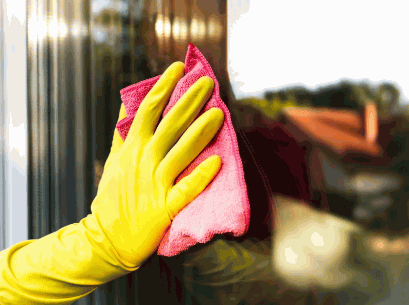
Step 2: Prepare The Cleaning Solution Using DIY And Natural Cleaning Methods
Preparing the cleaning solution is crucial for achieving a streak-free finish on window glass, whether you opt for a DIY cleaner or commercial options.
Among the various options, many prefer making a vinegar-based cleaning solution, which not only cleans but also disinfects effectively. To create this mixture, simply combine equal parts distilled vinegar and warm water in a spray bottle, providing an economical approach to cleanliness. If they are facing particularly stubborn grime, a soap solution consisting of mild detergent diluted in warm water can be exceptionally beneficial. For a more refreshing alternative, mixing two tablespoons of lemon juice with a litre of water offers both cleaning properties and a pleasant scent.
- Vinegar Mixture: 240 ml distilled vinegar + 240 ml warm water
- Soap Solution: 30 ml mild detergent + 1 litre warm water
- Lemon Juice Cleaner: 30 ml lemon juice + 1 litre water
By using these natural ingredients, not only will they ensure a sparkling clean finish, but they will also embrace eco-friendly choices in their cleaning habits, promoting window care with minimal environmental impact.
Step 3: Apply The Cleaning Solution To The Glass Including Window Tracks
Applying the cleaning solution to the glass is key to achieving a thorough cleaning. Use a spray bottle to evenly distribute your chosen cleaning solution over the window surface, focusing on areas with heavy grime or fingerprints for optimal cleaning.
To ensure the best results, it’s essential to maintain a systematic approach while applying the cleaning solution. Begin by thoroughly shaking the spray bottle to mix the solution, allowing for maximum efficacy. Next, hold the bottle approximately 30 centimetres away from the glass surface. This distance helps in achieving an
- even distribution
- preventing over-saturation
- reducing drips
which can often lead to streaks.
Consider the type of product you are using. High-quality glass cleaners can significantly enhance your results and protect against future smudges. Ensure coverage extends to the edges to avoid any build-up of dirt in commonly neglected areas. Always wipe in a circular motion using a microfibre cloth, which is gentle on the glass yet effective in lifting stubborn residues.
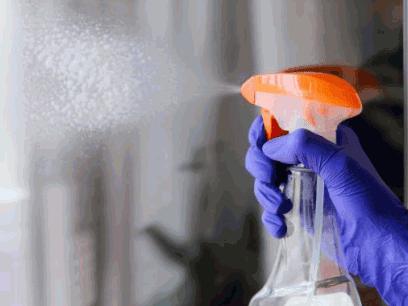
Step 4: Scrub The Glass With A Sponge Or Soft Cloth For Effective Residue Removal
Once the cleaning solution is applied, the next step is to scrub the glass gently with a sponge or soft cloth. Using a microfibre cloth is highly recommended as it effectively lifts dirt without scratching the glass surface. Cleaning windows can be a satisfying task when approached with the right techniques, ensuring a streak-free finish that enhances visibility and aesthetics.
When scraping away grime, it’s essential to maintain gentle pressure and utilise circular motions. This method not only minimises streaks but also ensures comprehensive coverage. To tackle stubborn spots, consider soaking a corner of your cloth in the cleaning solution and allowing it to rest on the blemish for a minute before scrubbing. This extra dwell time helps to break down tough residues, making them easier to remove.
- Utilise a squeegee for larger surfaces to avoid drips and enhance window polishing.
- For tricky areas, a soft-bristled brush can be very effective.
- Always wring out excess liquid from your cleaning cloth to prevent sloppy results.
- Consider using Casabella Microfiber Glass Cloths for an impeccable finish.
Incorporating these techniques will not only simplify the job but also ensure that the glass is left sparkling clean, inviting more natural light into your space.
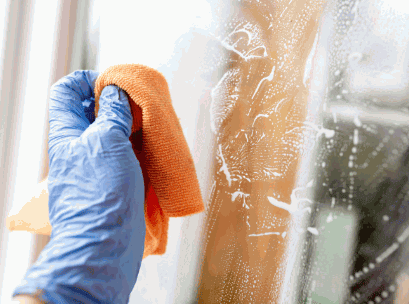
Step 5: Rinse The Glass With Clean Hot Water
Rinsing the glass with clean hot water is vital to ensure all cleaning solution residues are removed and to enhance the effectiveness of fingerprint cleaner.
To achieve a truly spotless finish, it is crucial to follow up your initial cleaning with a thorough rinse. Begin by filling a bucket or bowl with fresh, clean water, ideally using distilled water to prevent any mineral deposits from forming on the surface.
Using a clean sponge or cloth dampened with this water, gently wipe down the windows once more. This method not only helps in eliminating any remaining soap or vinegar residue left after scrubbing but also minimises streaking.
- Avoid rinsing with tap water when possible; minerals can lead to unsightly spots.
- For optimal results, use a soft squeegee after rinsing to remove excess water.
- Ensure the drying cloth is lint-free to prevent any residual fibres from clinging to the glass.
By taking these steps, you ensure a gleaming, streak-free finish that enhances the clarity and brightness of your windows.
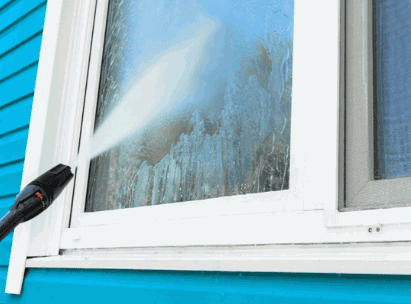
Step 6: Dry The Glass With A Squeegee Or Soft Cloth And Essential Oils
The final step in the cleaning process is to dry the glass using a squeegee or a soft cloth, which is essential for achieving a streak-free finish. Start at the top corner and pull the squeegee downwards in a straight line, wiping the blade with a cloth after each pass to ensure optimal results.
To amplify the effectiveness of drying glass surfaces, consider using essential oils for a pleasant scent and follow a few best practices.
- First, ensure the glass is clean and free from loose debris, as this can lead to unsightly scratches.
- Second, consider using a high-quality squeegee that fits comfortably in your hand. A rubber blade will glide effortlessly and remove water quickly.
- Those using a cloth should opt for microfiber to trap grime and absorb moisture without leaving lint behind.
Work in sections and dry promptly to prevent water spots from forming. By following these guidelines, not only will the windows sparkle, but you'll also avoid common pitfalls that can undermine your hard work.
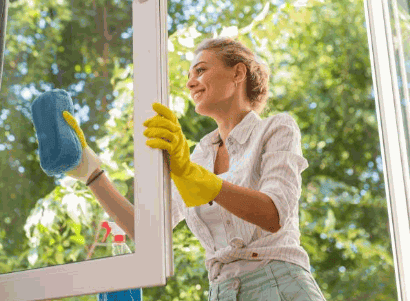
How To Clean Different Types Of Window Glass And Maintain Window Care?
Different types of window glass require tailored cleaning methods to ensure optimal results and maintain their integrity. For instance, tinted glass may need gentler cleaning solutions, while frosted glass can accumulate debris more quickly and require more frequent maintenance.
Understanding the distinct characteristics of each type of glass is essential for effective cleaning practices, as recommended by the Good Housekeeping Institute.
Tinted Glass
Cleaning tinted glass requires special attention to preserve its colour and integrity. Opt for a mild cleaning solution, such as a vinegar mixture, and avoid harsh chemicals that could damage the tint. Always use a soft cloth or sponge to scrub, ensuring you apply gentle pressure to prevent scratches.
Regarding maintaining the clarity and appearance of tinted glass, employing a few key strategies can make all the difference. Users should remember that proper care is essential not only for aesthetic reasons but also to prolong the life of the tinting material.
Here are some best practices, suggested by experts:
- Choose products specifically designed for tinted windows, as they often contain gentle ingredients that won't harm the film.
- Avoid using abrasive cleaners or scrubbers, as these can lead to permanent scratches and reduce the film's effectiveness.
- It is advisable to clean the glass during cooler parts of the day to prevent the cleaning solution from drying too quickly, which can leave streaks.
- Consider applying a protective coating formulated for tinted surfaces after cleaning to help repel dirt and grime.
By following these guidelines, individuals can ensure their tinted glass remains not only beautiful but also functional for years to come.
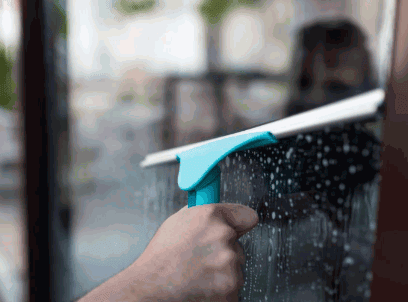
Frosted Glass Cleaning Hacks
Frosted glass can trap more dirt and fingerprints than clear glass, necessitating more frequent cleaning to maintain its appearance. Use a vinegar cleaner for effective residue removal and apply using a soft cloth to ensure a gentle touch that won't scratch the surface.
One of the specific challenges associated with cleaning frosted glass surfaces is their textured finish, which can accumulate grime in uneven pockets, making them difficult to clean thoroughly. To tackle these challenges, consider implementing a few effective strategies:
- Regular Maintenance: Schedule frequent cleanings to prevent major build-up.
- Use the Right Tools: A microfiber cloth or sponge works better than rough fabrics.
- Opt for a Dual Action Cleanser: Pair vinegar with warm water for additional effectiveness.
By incorporating these tips, one can ensure that frosted glass remains in pristine condition while avoiding issues common in cleaning home appliances.
Stained Glass
Cleaning stained glass requires a delicate approach to avoid damaging the artwork while ensuring cleanliness. Use a soft, damp cloth with a gentle cleaning solution such as distilled water mixed with a bit of mild soap to effectively remove grime without harming the glass.
Stained glass, renowned for its breathtaking artistry, also demands careful consideration during maintenance to preserve its beauty and integrity. It is essential to avoid abrasive cleaners or scrubbing brushes that could scratch the surface. Instead, the use of non-toxic solutions or a DIY cleaner is highly recommended for optimal care.
- Always test any cleaning solution on a small, inconspicuous area before applying it to the entire piece.
- Consider using a solution that specifically mentions its compatibility with stained glass.
- Regular dusting with a soft feather duster can help reduce the build-up of grime, making thorough cleaning easier.
Routine inspections can help spot potential issues such as cracked lead or loose glass, which may require professional attention. By adopting these practices, one can maintain the splendour of stained glass for years to come.
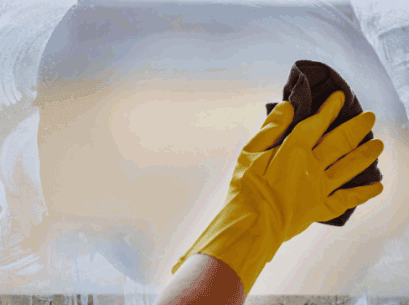
Tempered Glass
Toughened glass is generally more durable than standard glass, but it still requires proper cleaning to maintain its clarity. Using an effective cleaner like a vinegar mixture, scrub gently with a microfibre cloth, such as those found in a Casabella Microfiber Glass Cloths set to avoid scratches, ensuring that no residue remains after cleaning.
To achieve pristine results, consider incorporating the following effective cleaning methods tailored specifically for this resilient material:
- Prepare a solution: Mix equal parts white vinegar and water in a spray bottle for a natural yet potent cleaner that effectively cuts through grime.
- Choose the right tools: Opt for soft sponges or lint-free cloths, as these materials will not leave scratches or lint behind, maintaining that clear and bright appearance.
- Spot test: Always test your cleaning solution on a small, inconspicuous area first to ensure compatibility with the glass surface.
- Dry properly: After cleaning, dry the glass with a squeegee or a clean, dry cloth to prevent streaks and ensure no moisture lingers on the surface.
Incorporating these methods not only enhances the durability of toughened glass but also extends its lifespan, making maintenance a simple yet rewarding task.
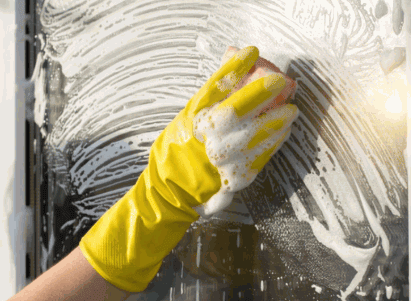
Double-Pane Glass
Cleaning double-glazed glass presents unique challenges due to the sealed nature of the units. It’s essential to clean the exterior surface thoroughly and, if accessible, the interior using a mild cleaning solution like a window cleaner to prevent moisture build-up between the panes.
When dealing with moisture trapped between the layers, it’s crucial to understand that traditional cleaning methods may not suffice. If condensation appears, the integrity of the seal might be compromised, allowing air and moisture to linger.
In such cases, seeking professional intervention is often the best course of action to ensure that the longevity of the window is maintained. Regular maintenance not only enhances the aesthetic appeal of your home but also prevents potential damage down the line. Here are a few strategies:
- Use a vacuum cleaner with a small attachment to remove any dust from the edges.
- Consider desiccants if advised by professionals to absorb moisture.
- In severe cases, window replacement may be necessary.
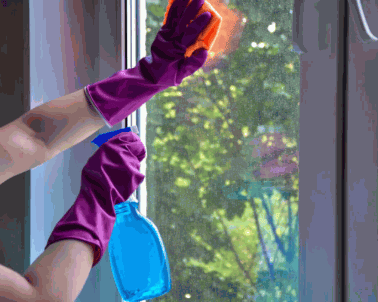
How To Maintain Clean Window Glass?
Maintaining clean window glass involves a combination of regular cleaning and proper care to keep windows in excellent condition. Frequent cleaning helps to prevent the build-up of grime and dirt while using safe cleaning products like homemade vinegar or bicarbonate of soda solutions enhances long-term window maintenance.
Establishing a cleaning schedule ensures windows stay clear all year round.
Regularly Clean Windows
Regularly cleaning windows is essential to preserving their clarity and extending their lifespan. Establishing a cleaning schedule, ideally every month or seasonally helps prevent dirt from accumulating and makes cleaning easier in the long run.
When considering window maintenance, it's important to realise that neglected windows can develop long-term damage, such as etched glass or stubborn stains, which become increasingly difficult and costly to remove.
Incorporating a few straightforward practices into your routine can significantly elevate the overall appearance of your home. Here are some benefits of regular window cleaning:
- Clarity: Clean windows provide a clear view and allow more natural light into your space.
- Longevity: Keeping windows clean helps to extend their lifespan by preventing damage.
- Cost-effectiveness: Regular maintenance reduces the chance of requiring professional services for significant repairs.
Ultimately, by prioritising this simple maintenance task, you facilitate easier future cleanings and enhance the overall aesthetic of your home.
Use Protective Coatings
Using protective coatings on window glass can significantly reduce the accumulation of dirt and grime, making maintenance easier. These coatings can enhance the window's resistance to weather effects and help maintain its clarity, much like using an Invisible Glass Cleaner for longer periods.
Several types of protective coatings are available that cater to different needs and preferences.
- Hydrophobic coatings offer water-repellent properties, causing rainwater to bead up and roll off, taking dirt along with it.
- Low-E glass coatings reflect infrared light, improving energy efficiency while protecting against UV rays that may fade interiors.
- Anti-graffiti coatings make it easier to remove stubborn stains and graffiti without damaging the glass.
- Tinted films provide added privacy and can reduce glare, making indoor spaces more comfortable.
By incorporating these specialised coatings, property owners can not only preserve the aesthetic appeal of their windows but also minimise the frequency of cleaning, saving both time and effort.
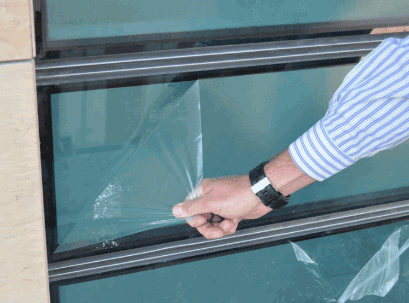
Clean Windows In The Correct Order
Cleaning windows in the correct order is essential for achieving optimal results without missing any spots. Start with the exterior sides of the windows, then proceed to the interior, ensuring a systematic approach that maximises cleaning efficiency.
To maintain clarity and shine, it’s crucial to use the right tools and products. First, gather all necessary supplies including a glass cleaner, microfibre cloths, a squeegee, and a bucket of warm, soapy water. This preparation not only saves time but also enhances the final outcome.
- Begin by removing dust and debris from the window frame and sill.
- Next, apply the cleaner in a zig-zag pattern to ensure even distribution.
- Use the squeegee from top to bottom, wiping the blade with a clean cloth after each pass.
By adhering to this sequence, individuals can achieve streak-free and spotless windows while minimising the risk of having to redo any sections.
Avoid Harsh Chemicals
Avoiding harsh chemicals when cleaning windows is crucial for both your health and the longevity of your windows. Opt instead for safe cleaning solutions, such as vinegar, bicarbonate of soda, or commercially available products free from harmful substances.
Using natural cleaning products not only protects the environment but also ensures that your living space remains free from toxic residues. Many people overlook the potential harm that traditional cleaners can cause, not just to the surfaces they treat, but also to the quality of indoor air. Embracing alternative cleaning options can significantly reduce exposure to allergens and irritants.
- Consider mixing equal parts of water and vinegar for an effective non-toxic cleaner, as recommended by the Good Housekeeping Institute.
- Bicarbonate of soda acts as a gentle abrasive, perfect for removing stubborn stains.
- Look for eco-friendly brands that prioritise sustainability in their formulas, such as Invisible Glass Cleaner.
By making these small changes in cleaning habits, one can ensure that both the windows and health are well cared for.
Inspect For Any Damage
Regularly inspecting windows for any signs of damage, perhaps consulting experts like Cloudy2Clear for guidance, is essential for effective maintenance and prevention of future issues. Look for cracks, chips, or any leaks in the seals, as these can affect both the performance and appearance of the windows.
When undertaking this critical task, homeowners should keep an eye out for several key indicators that can signal underlying problems. Areas to check include:
- Physical Damage: Look closely for any visible cracks or chips that could lead to further deterioration.
- Seal Integrity: Ensure that the seals around windows are intact, as compromised seals can lead to draughts and energy loss.
- Moisture Accumulation: Regularly inspect for condensation between panes, as this can indicate a seal failure.
- Operating Mechanism: Verify that windows open and close smoothly without any sticking or resistance.
Addressing these issues promptly not only enhances the durability of windows but also improves energy efficiency. Consider simple cleaning tips, such as using a soft cloth and gentle window cleaner, to maintain both their clarity and functionality.
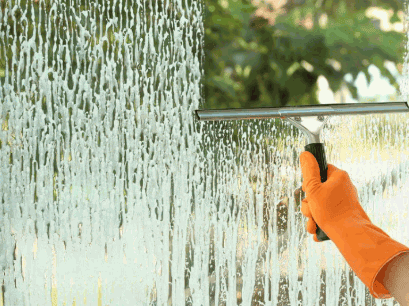
Are you looking to enhance your outdoor space with stylish, durable furniture? Resin wicker patio furniture might be just what you need.
This versatile option combines the beauty of traditional wicker with modern materials, offering a range of benefits that make it perfect for any setting.
We will explore what resin wicker is made of, its advantages, how it compares to other materials and tips for caring for it.
Plus, discover the various styles and reputable brands that can transform your patio into a cozy oasis.
Get ready to elevate your outdoor experience!

What Is Resin Wicker Patio Furniture?
Resin wicker garden furniture is a popular choice for creating stylish and functional outdoor living spaces, combining aesthetic appeal with durability. Made predominantly from synthetic rattan, this type of furniture is designed to withstand the elements while maintaining its charm, making it ideal for gardens, patios, and bistro sets.
Brands like Primrose and Leisuretouch-Rattan offer a wide variety of options, ensuring that homeowners can find the perfect pieces to enhance their outdoor areas. Resin wicker furniture not only provides comfort but also complements a range of garden styles.
What Is Resin Wicker Made Of?
Resin wicker is primarily made from synthetic materials such as High-Density Polyethylene (HDPE) and PVC, which are engineered to mimic the appearance of natural wicker while offering enhanced durability and weather resistance.
These materials not only provide a stunning aesthetic that can complement any outdoor setting, but they also bring numerous advantages over traditional wicker.
For instance, resin wicker is resistant to fading, cracking, and peeling, meaning it can withstand exposure to harsh sunlight and inclement weather without losing its charm. Unlike natural wicker, which requires extensive maintenance including regular cleaning and treatment to prevent deterioration, the synthetic variants require only minimal care, often just a quick wipe down to maintain their beauty.
This ease of maintenance ensures that the garden furniture remains in top condition, allowing homeowners to enjoy their outdoor spaces without the hassle that comes with upkeep.
Learn more: Can You Paint Resin Patio Furniture

What Are The Benefits Of Resin Wicker Patio Furniture?
Resin wicker patio furniture offers numerous benefits that make it an ideal choice for outdoor living spaces, including durability, weather resistance, low maintenance, lightweight design, and versatile aesthetics that cater to various styles and preferences.
Durable And Long-lasting
One of the standout features of resin wicker patio furniture is its durability, crafted to withstand various environmental conditions without compromising its structural integrity or aesthetic appeal. This exceptional resilience allows it to remain vibrant and functional throughout the years, making it a wise investment for any outdoor space.
Constructed from high-quality synthetic materials, resin wicker is designed to resist fading, cracking, and peeling, even in the harshest weather conditions. This ability to endure various climates—from scorching summer heat to bitter winter cold—means that users can enjoy their outdoor furnishings year after year, regardless of where they live.
- In regions with high UV exposure, this type of wicker will not become brittle or discoloured, ensuring that it retains its beautiful appearance.
- Similarly, in areas with heavy rainfall or humidity, the materials used in resin wicker are often treated to be water-resistant, preventing mould and mildew buildup.
Such durability provides peace of mind for homeowners, allowing them to host gatherings or enjoy quiet moments outside without worrying about weather-related damage. Resin wicker furniture exemplifies how thoughtful engineering and quality materials can lead to enduring outdoor solutions.
Weather-resistant
Resin wicker is inherently weather-resistant, allowing it to endure rain, sun, and fluctuating temperatures without fading or deteriorating, making it a perfect option for outdoor living spaces.
This durability is a key advantage for homeowners looking to create inviting, long-lasting outdoor environments. Unlike traditional materials such as natural wicker or wood, which may suffer from mould, rot, or fading over time, resin wicker remains vibrant and intact regardless of the weather conditions. It effectively resists harsh elements, making it suitable for various climates, from humid coastal areas to dry desert regions.
- Natural wicker is prone to wear and tear.
- Wood furniture requires frequent maintenance.
- Metal options often rust or corrode when exposed to moisture.
In contrast, resin wicker combines aesthetic appeal with practical functionality, providing a comfortable, stylish solution for all outdoor furniture needs.
Low Maintenance
One of the major advantages of resin wicker patio furniture is its low maintenance requirements, as synthetic materials do not require regular upkeep like natural wicker or wood, allowing homeowners to enjoy their outdoor spaces without the constant worry of repairs or extensive cleaning efforts.
Unlike traditional wicker or wooden furniture, which can warp, crack, or fade when exposed to the elements, resin wicker offers durability and resistance to moisture and UV rays. This means that owners can simply rinse their furniture with water and mild soap to remove dirt and debris.
Here are some helpful care tips:
- For light cleaning, a soft cloth and soapy water will suffice.
- In the case of stubborn stains, a gentle scrub with a nylon brush can help.
- To maintain its appearance, store furniture indoors during harsh winter conditions.
In comparison, wooden furniture may need regular sanding, sealing, and painting, making resin wicker a more convenient choice for those seeking durability and ease of maintenance.
Lightweight And Easy To Move
The lightweight nature of resin wicker patio furniture makes it easy to move and rearrange, allowing homeowners to adapt their outdoor living spaces according to their needs and preferences.
This flexibility is particularly advantageous when entertaining guests, as it enables quick modifications to seating arrangements or dining setups, ensuring everyone has a comfortable spot.
Imagine hosting a family gathering and, with a simple lift, you effortlessly shift the seating to create an inviting circle around a fire pit. When thunderstorms threaten, being able to swiftly relocate furniture to a sheltered area can protect it from potential damage.
Homeowners can also effortlessly reconfigure their spaces to accommodate various activities such as yoga sessions or children’s outdoor playdates. The ability to transform outdoor environments seamlessly enhances not only functionality but also enjoyment, making the most out of every sunny day and creating memorable experiences.
Versatile Design Options
Resin wicker garden furniture comes in a wide variety of styles and colours, providing versatile design options that can complement any outdoor living space, from contemporary to traditional themes.
The range is truly remarkable, as it spans various designs including sleek modern lines, rustic charm, and even tropical looks that evoke a beachy feel.
Whether you prefer bold colours or muted tones, there's something to suit every taste.
- For a chic contemporary garden, consider deep blues and greys.
- For a cosy traditional patio, earthy greens and browns can enhance warmth.
- Fun, vibrant shades can energise spaces perfect for entertaining.
Resin wicker pieces may feature unique configurations like sectionals or single lounge chairs that adapt seamlessly to any layout.
This flexibility allows individuals to craft personalised outdoor retreats that reflect their style and functionality needs.
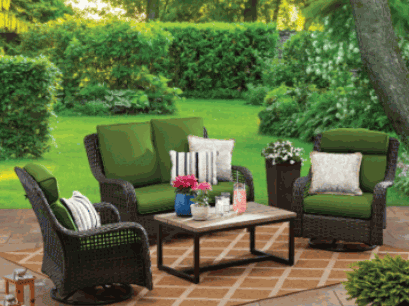
How Does Resin Wicker Compare To Other Materials?
When comparing resin wicker to other materials such as natural wicker, metal, and wood, it becomes clear that each material has its own unique set of benefits and drawbacks, making the choice largely dependent on personal preferences and specific uses.
Resin Wicker Vs. Natural Wicker
Resin wicker differs from natural wicker in terms of durability, maintenance, and resistance to the elements, making it a more practical choice for outdoor furniture.
In contrast to traditional materials, which can suffer damage from moisture, sunlight, and temperature fluctuations, resin wicker offers an impressive array of advantages. This synthetic option is crafted to withstand the rigours of outdoor living, meaning it won’t fade, crack, or deteriorate over time. To truly understand why one might prefer resin, it’s essential to consider various elements:
- Care: Resin wicker requires minimal upkeep; a simple rinse with water or a gentle wipe is often enough. Natural wicker, however, may need more careful treatment to prevent mould and mildew.
- Lifespan: Typically, the resin can last up to 10 years or more, whilst natural wicker might last around 5 to 7 years when properly maintained.
- Performance: In terms of performance, resin wicker is resistant to fading and staining, making it ideal for outdoor settings where exposure to the elements is constant.
Choosing resin wicker ensures that outdoor furniture remains both functional and aesthetically pleasing, providing homeowners with a durable and stylish option.

Resin Wicker Vs. Metal
Regarding durability and weight, resin wicker and metal differ significantly, with resin wicker offering a lighter alternative without sacrificing resilience and style.
This contrast is evident when considering their physical properties and practical applications in outdoor settings.
For instance,
- Resin wicker is not only easier to move but also provides flexible design options that can enhance any patio or garden.
- Metal furniture, while often sturdier, tends to be heavier, making it less suitable for those who may wish to frequently rearrange their outdoor spaces.
- When evaluating weather resistance, resin wicker triumphs in being impervious to rust and corrosion, ensuring longevity in varying climates.
Ultimately, the choice between these two materials often comes down to personal preference and specific usage requirements, each catering to distinct tastes and practical needs.

Resin Wicker Vs. Wood
Unlike wood, which requires regular maintenance and is subject to wear from moisture and pests, resin-wicker patio furniture provides a more durable and low-maintenance option for outdoor environments.
This remarkable alternative boasts a range of benefits that appeal to those looking for practicality without sacrificing style. For instance, when considering maintenance, resin wicker effortlessly withstands rain and UV exposure, eliminating the need for frequent repainting or sealing that wood necessitates.
In terms of longevity, high-quality resin wicker can resist fading and cracking for many years, while wood often succumbs to decay when exposed to the elements. As for the aesthetic appeal, resin wicker comes in a variety of colours and designs, mimicking the look of natural materials, which enables easy integration into any outdoor decor.
- Maintenance: Minimal upkeep is required; simply wipe clean.
- Longevity: Resistant to weathering; lasts longer than treated wood.
- Aesthetic Appeal: Available in various styles and colours.
So, when one evaluates outdoor furniture options, choosing between these materials involves more than just preference; it’s about understanding how well they perform under environmental pressures.

How To Care For Resin Wicker Patio Furniture?
Caring for resin wicker patio furniture is straightforward, requiring minimal effort to maintain its appearance and prolong its lifespan, making it an excellent choice for homeowners seeking low-maintenance solutions. With proper care, this type of furniture can withstand the elements and keep looking new for years, allowing families to enjoy their outdoor spaces without the worry of frequent replacements.
To ensure that this furniture lasts as long as possible, consider the following care and maintenance tips:
- Regular Cleaning: Use a soft brush or cloth to remove dirt and debris. For deeper cleaning, a mixture of mild soap and water can be used, followed by rinsing with a hose.
- Storage Suggestions: During extreme weather conditions, store the furniture indoors or cover it with protective tarpaulins to shield it from harsh elements.
- Protective Measures: Applying a UV protectant can help prevent fading and cracking, ensuring that the resin maintains its vibrant colour.
By following these simple guidelines, owners can enjoy their resin wicker patio furniture for many seasons without the hassle of extensive upkeep.
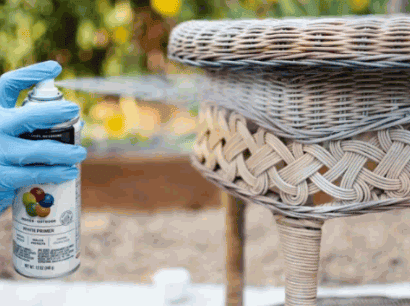
What Are The Different Styles Of Resin Wicker Patio Furniture?
Resin wicker patio furniture comes in a diverse array of styles, including traditional, modern, coastal, and tropical designs, allowing homeowners to choose pieces that best fit their personal tastes and outdoor aesthetics.
Traditional Wicker Style
The traditional wicker style of resin wicker garden furniture reflects classic design elements, often featuring intricate woven patterns and neutral colour palettes that evoke a sense of timeless elegance.
This style not only showcases craftsmanship but also offers incredible versatility, making it suitable for a variety of outdoor settings, from cosy patios to spacious garden decks. Wicker furniture seamlessly integrates into various garden themes, serving as a focal point or a complementary piece amidst vibrant flower beds or minimalist landscapes.
- In Mediterranean-inspired gardens, for example, this furniture pairs beautifully with terracotta pots and lush greenery.
- Conversely, in contemporary environments, it can create a striking contrast against sleek, modern hardscaping.
Its weather-resistant materials ensure durability, allowing this style to maintain its charm through changing seasons, which makes it a pragmatic choice for discerning homeowners looking to enhance their outdoor experience.
Modern Wicker Style
Modern wicker-style patio furniture showcases sleek lines and contemporary designs, utilising resin wicker to create a minimalist aesthetic that pairs well with various outdoor living spaces.
This innovative furniture not only enhances the beauty of a patio but also offers exceptional durability and comfort. With features like weather-resistant materials, modern wicker furniture transforms any garden, balcony, or poolside into a chic oasis.
For instance, consider a sectional sofa set that invites relaxing gatherings or a versatile dining set that adapts effortlessly for al fresco dining.
- Expandable dining tables
- Cosy lounge chairs
- Ottomans for additional seating
Each piece reflects a balance of style and functionality, appealing to those who appreciate both aesthetics and practicality in their outdoor retreats.

Coastal Wicker Style
Coastal wicker-style patio furniture embodies a relaxed, beach-inspired aesthetic, often incorporating light colours and airy designs that evoke the serenity of seaside living.
This particular furniture style is characterised by its use of wicker weaving techniques, creating a visually appealing texture that complements natural light beautifully. Often constructed from materials like rattan or synthetic fibres, it not only adds an inviting touch but is also durable enough to withstand coastal conditions.
- Light and airy colours such as soft whites, gentle blues, and muted pastels are commonly used, enhancing the breezy vibe.
- Design elements often include curved lines and open frameworks, promoting a sense of freedom, much like the ocean's expansive horizon.
- This furniture type is perfect for beach houses or outdoor spaces, allowing for comfortable lounging while enjoying picturesque views.
Ultimately, coastal wicker style furniture cultivates a welcoming atmosphere, ideal for relaxing by the water or entertaining guests under the sun.

Tropical Wicker Style
Tropical wicker-style patio furniture is characterised by vibrant colours, bold patterns, and a playful design that brings a lively, exotic feel to outdoor spaces.
This unique furniture style truly shines in gardens, poolside lounges, or sun-kissed terraces, where it creates an atmosphere reminiscent of far-off tropical locales. The incorporation of natural textures combines with bright hues—think ocean blues, sunset oranges, and lush greens—to evoke a sense of relaxation and festivity.
- For instance, a cosy sectional adorned with Hawaiian print cushions can become the focal point of a backyard gathering.
- Similarly, a vibrant wicker coffee table paired with handcrafted decorative items can further enhance the exotic vibe.
Whether it’s a casual brunch with friends or a serene evening with family, this style enriches outdoor experiences by enveloping spaces with warmth and charm. Wicker furniture’s durability against the elements ensures that its appeal lasts throughout the seasons.

Where Can You Use Resin Wicker Patio Furniture?
Resin wicker patio furniture can be used in various settings, including gardens, patios, and even bistro sets, making it versatile for enhancing both casual and elegant outdoor living spaces.
This adaptability is particularly valuable as it seamlessly complements a range of outdoor environments. For instance, in a cosy garden setting, resin wicker chairs and lounges create a welcoming nook for relaxation or intimate gatherings. On the patio, this stylish furniture can easily transition from morning coffee spots to evening entertainment venues, offering timeless elegance that suits any occasion.
When utilised in:
- balconies
- poolside
lounges, it withstands the elements while providing comfort and aesthetic appeal, proving that adaptability is at the heart of this design choice.

What Are Some Popular Brands Of Resin Wicker Patio Furniture?
Some of the most popular brands offering resin wicker patio furniture include Primrose and Leisuretouch-Rattan, known for their quality products and diverse selections that cater to various styles and budgets.
These brands stand out in the crowded market, each bringing distinctive features and styles to the discerning consumer. For instance, Primrose focuses on sustainability by utilising eco-friendly materials in their designs, ensuring that customers not only enjoy stylish outdoor spaces but also contribute to environmental conservation.
Meanwhile, Leisuretouch-Rattan excels in versatility, offering an extensive range of modular patio furniture that can be customised to fit any outdoor arrangement.
- Primrose: Eco-friendly materials
- Leisuretouch-Rattan: Modular designs
By emphasising innovation and quality, these brands consistently deliver products that boast durability and elegance, making outdoor living enjoyable for everyone.
Resin patio furniture has become a popular choice for outdoor spaces due to its durability, style, and low maintenance requirements.
This piece explores the different types of resin patio furniture, from wicker to recycled plastic, and highlights their unique benefits.
If you're considering a fresh look for your outdoor seating, it discusses whether you can paint resin furniture, the best types of paint to use, and essential maintenance tips to keep it looking pristine.
Dive in to discover how to elevate your patio experience!
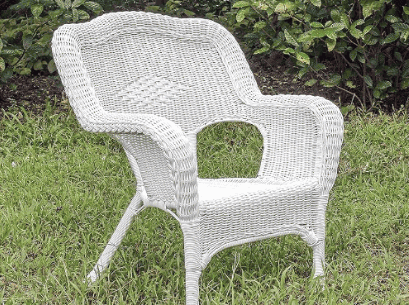
What Is Resin Patio Furniture?
Resin garden furniture is a popular choice for outdoor spaces, combining durability and style to create functional and aesthetically pleasing areas for relaxation and entertainment in your garden or patio.
Made from materials like rattan and wicker, this type of furniture is lightweight and highly resistant to weather conditions, making it suitable for various climates, whether it’s sunny or rainy.
Not only does resin furniture come in vibrant colours and patterns, but it is also affordable and easy to maintain, allowing homeowners to enjoy their outdoor spaces without the worry of constant upkeep.
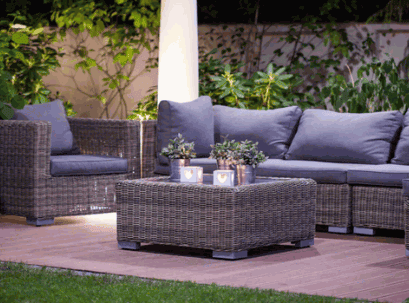
What Are The Benefits Of Resin Patio Furniture?
Resin patio furniture offers numerous benefits that make it an ideal choice for enhancing your outdoor space. Its weather-resistant properties ensure that it can withstand various environmental conditions, from rain to intense sunlight, without fading or deteriorating, thus providing long-lasting durability.
Additionally, its lightweight design makes it easy to rearrange or store, while the affordability factor allows homeowners to customise their outdoor areas without breaking the bank. With minimal maintenance required, resin furniture allows you to spend more time enjoying your garden oasis rather than worrying about upkeep.

What Are The Different Types Of Resin Patio Furniture?
Resin patio furniture comes in various types, each designed to cater to different aesthetic preferences and functional needs for your outdoor environment.
The primary forms of resin furniture include wicker, recycled plastic, resin wood, and resin metal options, each offering unique designs and benefits suited for various outdoor settings.
Wicker resin pieces provide a classic look with their woven texture, while recycled plastic options promote sustainability. Resin wood combines the warmth of natural wood with the durability of resin, and resin metal presents a sleek, modern alternative that can elevate any patio décor.
Wicker Resin Patio Furniture
Wicker resin patio furniture combines the timeless appeal of traditional wicker designs with the durability and low maintenance characteristics of resin materials. This type of outdoor furniture is ideal for creating a cosy and inviting atmosphere in your garden, providing a versatile option that complements various décor styles, from classic to contemporary. Constructed from lightweight materials, wicker resin furniture allows for easy rearrangement, making it perfect for entertaining or simply enjoying a sunny day outside.
This blend not only adds aesthetic value but also enhances longevity, ensuring that each piece withstands the elements while looking stylish. Available in a myriad of colours and styles, homeowners can easily find options that align with their personal taste, whether they prefer muted earth tones or vibrant hues.
Maintenance is a breeze; a simple rinse with water or a mild soap solution suffices to keep these pieces looking pristine, making them an ideal choice for those with busy lifestyles.
- Durable against moisture and UV rays
- Available in various designs, including chairs, tables, and loungers
- Eco-friendly options are also available in the market
Ultimately, choosing wicker resin patio furniture creates a stylish sanctuary for relaxation and rejuvenation, perfect for any outdoor setting.

Recycled Plastic Resin Patio Furniture
Recycled plastic resin patio furniture is an eco-friendly option that not only enhances your outdoor space but also contributes to sustainability efforts by using repurposed materials. This type of furniture is exceptionally durable, and resistant to fading and cracking, ensuring that it maintains its appearance over time, regardless of the weather conditions. Recycled plastic furniture requires very little maintenance and offers a variety of styles and colours, allowing homeowners to create a custom look that aligns with their personal taste and environmental values.
The significance of this furniture lies in its ability to provide an attractive solution for outdoor settings while minimising environmental impact. With a growing awareness of climate change and plastic waste, opting for recycled plastic resin patio furniture is a conscientious choice. Homeowners can enjoy:
- Eco-friendly Attributes: Made from recycled materials, these pieces reduce landfill waste.
- Design Options: Available in an array of colours and styles, they can complement various garden themes.
- Maintenance Ease: A simple rinse with soap and water is often all that’s needed to keep them looking new.
By choosing this furniture type, individuals not only beautify their outdoor spaces but also support sustainable practices that align with modern environmental values.
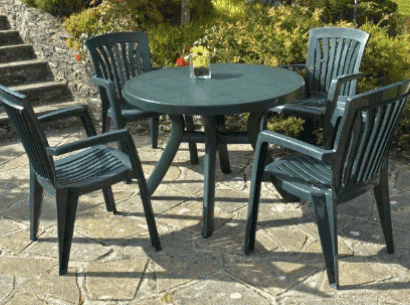
Resin Wood Patio Furniture
Resin wood patio furniture offers the aesthetic appeal of natural wood while incorporating the durability and weather-resistant properties of resin materials. This combination allows homeowners to enjoy the classic look of wood without the associated maintenance challenges, ensuring that the furniture remains vibrant and functional in diverse outdoor conditions.
Ideal for patios, gardens, or poolside spaces, resin wood furniture comes in various styles and finishes, making it easy to customise your outdoor area to reflect your personal style.
The innovative composition of this furniture ensures that it can withstand the elements, making it a wise investment for outdoor spaces.
- Available in numerous designs, from sleek modern looks to classic rustic styles, this furniture complements any décor.
- The lightweight nature facilitates easy rearrangement for any social gathering or seasonal change.
- It typically requires minimal upkeep, needing only occasional cleaning with soap and water to retain its appearance.
Each piece is crafted to resist fading, splintering, and cracking, which enhances its longevity, ensuring that it remains an integral part of your outdoor living experience for years to come.
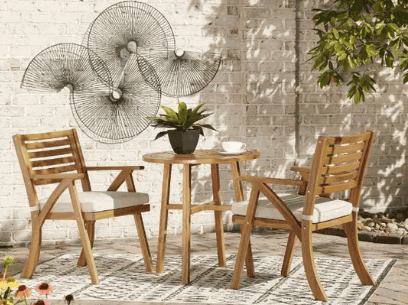
Resin Metal Patio Furniture
Resin metal patio furniture combines the sleek and contemporary look of metal with the weather-resistant benefits of resin materials, creating a stylish and functional addition to any outdoor space.
This unique fusion not only enhances the visual appeal but also provides practical solutions for outdoor living. One of the standout features of resin metal patio furniture is its lightweight design, making it easy to rearrange or store when needed. The resin components offer protection against fading and cracking, ensuring that your furniture looks vibrant no matter the season.
- Stylish Aesthetics: Available in various colours and finishes, allowing for customisation that suits individual tastes.
- Weather Resistance: Handles sun, rain, and wind without compromising structural integrity.
- Minimal Maintenance: Simple cleaning methods that keep furniture looking pristine.
Incorporating this furniture not only enhances your outdoor décor but also provides a lasting investment in comfort and style for family gatherings and entertaining guests.
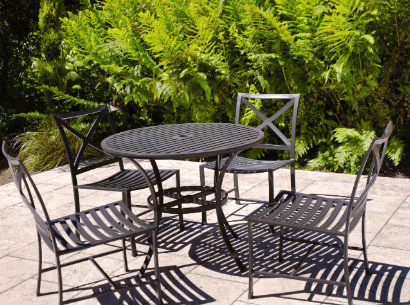
Can You Paint Resin Patio Furniture?
Yes, you can paint resin patio furniture, and it can be a fun DIY project that allows you to customise the colour and style of your outdoor furniture to match your personal taste.
Using products like Krylon Fusion All-in-One spray paint designed for plastic surfaces, you can achieve vibrant, long-lasting results that transform your plain patio set into a colourful outdoor oasis.
With the right preparation and technique, painting resin furniture is an effective way to refresh your outdoor space without the need for costly replacements.
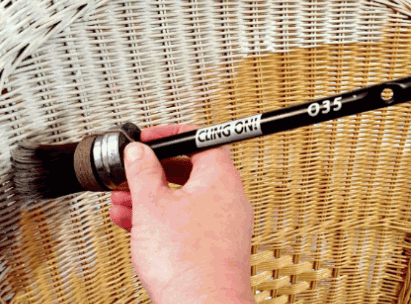
What Types Of Paint Can Be Used On Resin Patio Furniture?
When painting resin patio furniture, it is crucial to choose the right type of paint to ensure a durable and beautiful finish. Understanding the specific characteristics and advantages of each paint type can significantly impact the final outcome, providing both aesthetic appeal and longevity. Spray paints specifically designed for plastics, such as Krylon Fusion All-in-One, are ideal as they bond well to the resin surface and provide a long-lasting colour that withstands the elements. Other options include acrylic paint and specialty paints made for outdoor furniture, which can help achieve a beautiful, vibrant look while enhancing the furniture's durability.
Here are some key paint options for resin furniture:
- Spray Paints: These are popular due to their ease of application and smooth finish. Brands like Krylon and Rust-Oleum offer formulations specifically for plastics.
- Acrylic Paint: This water-based option is versatile and easy to clean. It dries quickly, allowing for multiple layers.
- Specialty Paints: Some paints are tailored explicitly for outdoor use, providing UV protection against fading.
Choosing the right product is essential not only for achieving an aesthetically pleasing look but also for maintaining the longevity of the furniture.
Proper preparation, including cleaning and priming when necessary, further ensures optimal results.
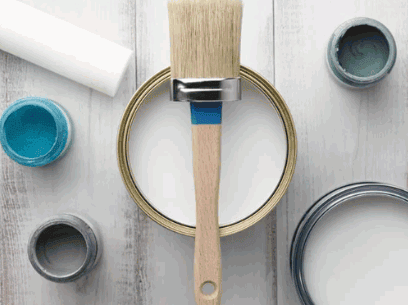
What Preparations Are Needed Before Painting Resin Patio Furniture?
Before painting resin patio furniture, proper preparations are essential to ensure a successful and durable finish that enhances the furniture's appearance. Ensuring that the surface is adequately prepared will significantly enhance the overall outcome of the project.
Start by cleaning the furniture thoroughly to remove any dirt, grime, or grease that may interfere with the paint adhesion. It is important to use a gentle detergent and water solution, scrubbing with a soft cloth or sponge to avoid scratching the resin surface.
After cleaning, rinse the furniture with clean water and allow it to dry completely.
Next, lightly sand the surface using fine-grit sandpaper to create a rough texture for better paint bonding. This step is crucial as it helps the paint grip the surface more effectively. Be sure to wipe away any dust left from the sanding process with a damp cloth.
Optionally, applying a primer designed for plastic surfaces can further improve adhesion and durability, providing a solid foundation for your chosen paint. This primer not only enhances the paint's adherence but also helps to prevent chipping and peeling over time.
Ensure you are working in a well-ventilated area and that the temperature is suitable for painting. Following these preparation steps will ultimately lead to a more polished and lasting result.
What Are The Steps For Painting Resin Patio Furniture?
Painting resin patio furniture involves several straightforward steps that can transform your outdoor space with vibrant colours and a fresh look. Begin by preparing your workspace in a well-ventilated area or outdoors to avoid inhaling fumes from spray paint.
After ensuring your workspace is ready, the next step is to clean the furniture thoroughly to remove any dirt or debris that can interfere with the paint's adhesion. Once cleaned, lightly sand the surface to create a better bond for the paint.
Here are the key steps:
- Cleaning: Use a mild detergent to wash the furniture.
- Sanding: Sand with fine-grit sandpaper for a smooth finish.
- Priming: Optional but recommended for optimised results.
- Painting: Apply a thin layer of Krylon spray paint.
- Drying: Allow 24 hours for each coat to dry completely before applying subsequent layers.
This method not only enhances the aesthetic appeal but also ensures the paint adheres effectively, providing longevity to the renewed look of the furniture.
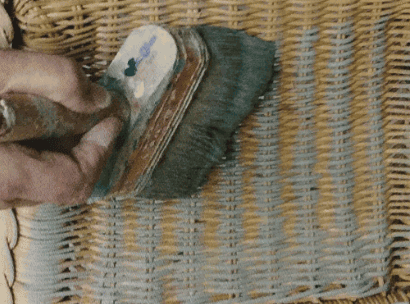
How To Maintain Painted Resin Patio Furniture?
Maintaining painted resin patio furniture is key to ensuring it remains vibrant and functional for years to come. Regular care and attention can prevent weather damage and extend the life of your prized outdoor furniture.
Start by cleaning the surfaces gently with mild soap and water, avoiding harsh chemicals that could damage the paint. Additionally, periodically inspect the furniture for any signs of wear or damage, and apply a fresh coat of paint or sealer when necessary to preserve its durability and appearance.
Dig deeper: How To Clean White Resin Patio Chairs
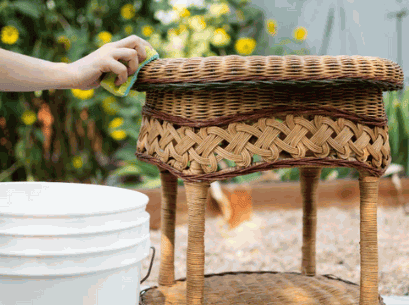
What Are The Best Practices For Cleaning Painted Resin Patio Furniture?
The best practices for cleaning painted resin patio furniture involve using gentle techniques and materials to preserve both the paint and the furniture's integrity. Begin by using a soft cloth or sponge with mild soap mixed with warm water to wipe down the surfaces, ensuring that you avoid any abrasive materials that could scratch the paint. Regular cleaning not only helps maintain the furniture's appearance but also prevents a buildup of dirt and grime that can cause deterioration over time.
Along with initial cleaning, it is beneficial to periodically inspect the furniture for any signs of wear or damage.
- When addressing tougher stains, a diluted vinegar solution can be applied gently, followed by a clean water rinse.
- For areas with stubborn grime, soft-bristled brushes ensure that the paint remains unharmed while effectively loosening debris.
Drying the surfaces with a microfibre towel helps minimise water spots and keeps the finish looking fresh.
Always remember that protecting the furniture from harsh environmental elements through the use of covers during adverse weather conditions can also prolong its lifespan.
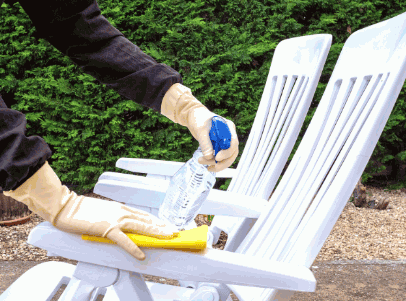
How To Protect Painted Resin Patio Furniture From Sun Damage?
Protecting painted resin patio furniture from sun damage is essential to maintaining its vibrant colours and structural integrity over time.
By implementing strategic care measures, one can significantly prolong the life of these outdoor furnishings. It is important to prioritise UV protection, ensuring that the furniture remains attractive and safe for family use. Here are some effective methods and preventative actions:
- Positioning: Ideally, place the furniture in shaded areas during peak sun hours. This simple adjustment can mitigate direct sunlight exposure, thus preventing premature fading.
- Use Covers: Outdoor furniture covers are a lightweight and convenient option when the furniture is not in use. Investing in high-quality, UV-resistant covers will help shield the furniture from damaging sun rays.
- Apply a Sealer: Using a UV-resistant sealant on the painted surface can add a protective layer, enhancing durability while preserving aesthetic appeal.
By incorporating these strategies into regular maintenance routines, one can ensure the longevity of painted resin patio furniture against sun damage.

What Are The Common Issues With Painting Resin Patio Furniture?
While painting resin patio furniture can rejuvenate its appearance, several common issues may arise during the process, requiring attention and care. One typical problem is poor adhesion, which can lead to peeling or chipping paint, often resulting from insufficient surface preparation or humidity during application. Fading colours may occur if proper UV protection is not applied, emphasising the need for maintenance to prolong the look and lifespan of your painted outdoor furniture.
To ensure a successful painting experience, it’s crucial to understand a few more factors that contribute to these problems. Proper preparation of the surface is key; cleaning thoroughly to remove dirt and grease can significantly enhance paint adherence.
Here are some useful tips:
- Choose a dry day for painting to avoid humidity.
- Use a primer designed for plastic surfaces to improve adhesion.
- Opt for high-quality exterior paint that has built-in UV protection.
By taking these precautions, not only can issues like peeling and chipping be mitigated, but the vibrancy of the colours will last longer against the sun's harsh rays. Monitoring weather conditions and carefully selecting your materials can lead to an impressive, enduring finish that revitalises outdoor spaces.
White resin patio chairs can bring a fresh and inviting look to your outdoor space, but they require regular care to maintain their beauty.
Cleaning these chairs not only enhances their aesthetic appeal but also prevents unwanted stains and discoloration, ensuring they last for years to come.
This guide provides the essential steps and tools needed to clean your chairs effectively, along with tips to keep them looking pristine.
Dive in to discover the best practices for maintaining your outdoor furniture!
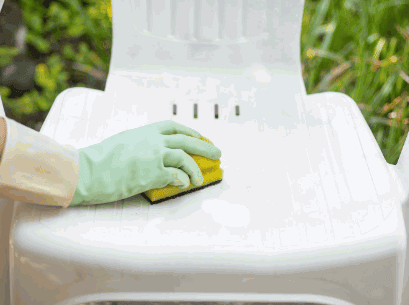
Why It Is Important To Clean White Resin Patio Chairs?
Cleaning white resin patio chairs is crucial for maintaining their aesthetic appeal, preventing stains and discolouration, and extending their lifespan. Over time, outdoor furniture like these chairs accumulates dirt, mould, and grime, which can detract from their visual charm and lead to permanent damage.
Regular cleaning not only enhances the beauty of your outdoor space but also ensures these chairs remain functional and inviting for years to come.
Find out more: What Is Resin Wicker Patio Furniture
Maintains Aesthetic Appeal
Maintaining the aesthetic appeal of your white plastic chairs is essential for creating a welcoming outdoor environment.
By regularly cleaning these chairs, you can ensure that their bright, clean appearance contributes positively to your outdoor space. Over time, exposure to the elements may cause discolouration and dirt accumulation, which can detract from their charm. Using specific cleaning products, such as gentle soap solutions, vinegar, or specialised plastic cleaners, can significantly enhance the longevity and appearance of the furniture.
- Begin by rinsing the chairs with water to remove loose debris.
- Follow up with a solution of warm water and washing-up liquid using a soft-bristle brush.
- Rinse thoroughly to prevent soap residue from fading on the surface.
- For stubborn stains, a mixture of vinegar and bicarbonate of soda can work wonders.
Incorporating these practices into your cleaning routine will not only maintain their pristine condition but also elevate the overall ambience of your outdoor areas.
Prevents Stains And Discolouration
Preventing stains and discolouration is one of the most significant reasons to keep your white resin patio chairs clean.
Maintaining the pristine condition of these outdoor essentials not only enhances their aesthetic appeal but also prolongs their lifespan. Accumulated dirt, grime, and spills can quickly tarnish their bright appearance, making it essential to employ effective cleaning methods. Consider utilising a blend of common household items for stain prevention.
- Baking soda is an excellent natural abrasive that can remove stubborn marks without scratching the surface.
- Distilled white vinegar acts as a gentle yet effective agent for neutralising odours and breaking down stains.
- All-purpose cleaners are versatile and can tackle a range of messes while being safe for plastic materials.
Incorporating these techniques will not only keep the white plastic chairs in top shape but also save time and money in the long run.
Extends Lifespan Of Chairs
Regular cleaning not only preserves the beauty of your white plastic chairs but also extends their lifespan significantly.
Without appropriate care, even the sturdiest outdoor furniture is susceptible to the detrimental effects of the elements and daily use, which can lead to severe wear and tear over time. In particular, resin chairs, known for their durability, require regular upkeep to maintain their structural integrity and aesthetic appeal.
To effectively care for these chairs, it is essential to follow a few key practices:
- Routine Cleaning: Use a mild soap solution and a soft sponge to wipe down the surfaces regularly, preventing dirt accumulation.
- Deep Cleaning: For stubborn stains, a gentle scrub using a mixture of bicarbonate soda and water can be applied to restore their original shine.
- UV Protection: Consider using a UV-resistant spray designed for plastic furniture to help shield your chairs from sun damage.
By adhering to these simple yet effective maintenance practices, homeowners can bolster the longevity of their cherished furniture, safeguarding it against the impacts of neglect.
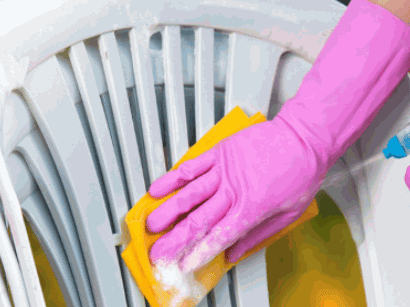
What You Will Need
To effectively clean white resin patio chairs, you will need a few essential items that enhance the cleaning process and produce the best results.
Cleaning Solution
A suitable cleaning solution is vital for ensuring your white plastic chairs are spotless and free from dirt and stains.
Choosing the right cleaning solution can make all the difference in maintaining the pristine condition of outdoor furniture. There are multiple options at one’s disposal, ranging from household ingredients to specialised products.
For instance,
- Bicarbonate of soda mixed with water creates a gentle abrasive that effectively tackles grime and stubborn marks.
- Distilled white vinegar acts as a natural disinfectant, breaking down grime and providing a shiny finish.
Commercial products like oxygen bleach deliver exceptional results by lifting stains without harming the material. Each option comes with its own set of benefits, allowing individuals to choose the best solution for their cleaning needs while ensuring their furniture looks as good as new.
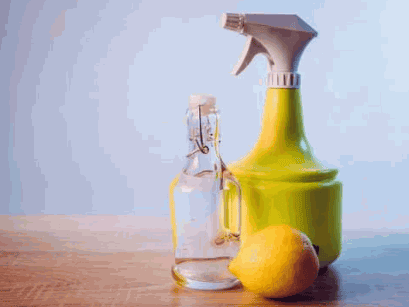
Soft-Bristled Brush
A soft-bristled brush is an essential tool for cleaning outdoor furniture as it effectively removes dirt without damaging the surface.
Utilising a brush designed with gentle bristles allows individuals to scrub away built-up grime and stubborn stains that often accumulate on white plastic chairs due to exposure to the elements. This cleaning method not only maintains the aesthetic appeal of the furniture but also enhances its longevity by minimising the risk of scratches, which can occur with harsher scrub pads. A soft-bristled brush, combined with a mild cleaning solution, works harmoniously to lift off the dirt without leaving marks, making it particularly suitable for maintaining outdoor seating.
Here are some benefits of using a soft-bristled brush:
- Prevents surface damage that can result from abrasive cleaning tools.
- Allows for thorough cleaning in crevices and hard-to-reach areas.
- Facilitates the removal of persistent stains and residues.
- Is gentle enough for regular use without wear and tear.
The choice to clean with a soft-bristled brush is invaluable for preserving the pristine condition of outdoor plastic furniture.
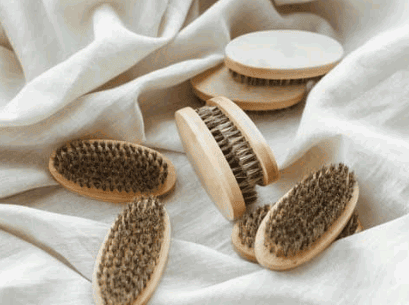
Water Hose
A garden water hose is crucial for rinsing off cleaning solutions and debris from your white plastic chairs after scrubbing.
Utilising a hose allows for a consistent and powerful stream of water, making it easier to flush away any stubborn dirt or soap remaining on the surface. When cleaning, it's important to achieve a thorough rinse to prevent any residue from forming, which can lead to unsightly stains or deterioration over time.
To ensure effective cleaning, consider the following techniques:
- Adjust the nozzle to control water pressure based on the level of dirt.
- Use a wide spray pattern for rinsing larger areas quickly.
- Rinse from top to bottom to avoid redistributing dirt.
By incorporating these practices, the overall cleaning process becomes more efficient and effective, ensuring that your outdoor furniture remains in pristine condition.
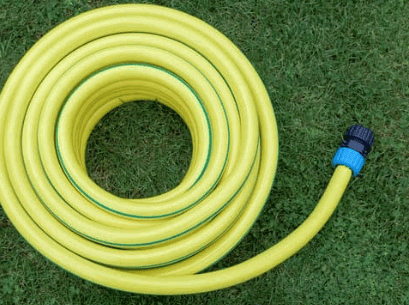
Bucket
Having a bucket to hand is practical for mixing your cleaning solution and carrying water for rinsing while cleaning your outdoor furniture.
Not only does this simple yet versatile tool streamline the entire cleaning process, but it also offers multiple advantages that make the job easier and more efficient. The bucket can serve as a central hub for organising cleaning supplies, allowing users to keep everything in one place.
- For instance, it can be used to store sponges, brushes, and clothes, ensuring they are easily accessible as one goes from task to task.
- A properly sized bucket can hold various proportions of water and cleaning solutions, which can be adjusted according to the specific needs of different surfaces.
- Using a bucket minimises the risk of spills and helps maintain a clean environment, creating a more enjoyable cleaning experience.
With such capabilities, it becomes clear why having this essential tool to hand can enhance both efficiency and effectiveness in outdoor cleaning endeavours.
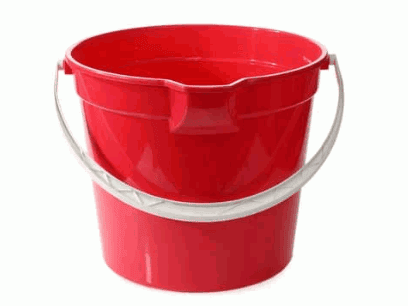
Clean Cloth
A clean cloth or microfiber towel is essential for drying your white plastic chairs after washing them.
Taking the time to utilise the right drying tools can significantly impact the outcome. When you opt for microfiber towels, you not only ensure effective moisture absorption, but also minimise the likelihood of leaving unsightly water spots that can detract from the overall look of the furniture. This means that after washing your chairs, using one of these specialised cloths allows for a streak-free finish, preserving the furniture's pristine appearance.
Employing clean cloths helps prevent dirt and debris from adhering to damp surfaces, leading to longer-lasting cleanliness and aesthetic appeal.
- Microfiber towels are highly absorbent.
- Prevent water spots with thorough drying.
- Maintain the fresh look of your outdoor furniture.
Thus, incorporating the right drying techniques and materials into your cleaning routine can boost the overall life and look of your outdoor fixtures significantly.
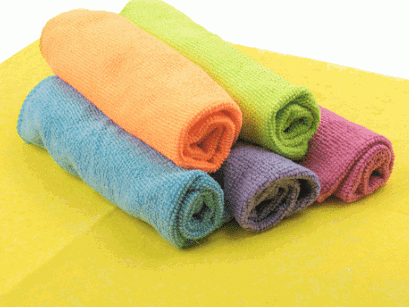
Step-By-Step Guide To Clean White Resin Patio Chairs
Cleaning your white resin garden chairs can be a simple and effective process when you follow a step-by-step guide that incorporates the right cleaning products and techniques.
Prepare The Cleaning Solution
The first step in cleaning white plastic chairs is to prepare an effective cleaning solution using common household ingredients.
For those looking to restore the lustre and cleanliness of their outdoor seating, it’s beneficial to explore various recipes that utilise baking soda and distilled white vinegar, as well as some commercial cleaning options that can deliver impressive results.
- Baking Soda Paste: Combine one part baking soda with two parts water to create a paste. Apply this mixture to any stubborn stains and scrub gently with a soft cloth.
- Vinegar Cleaner: Mix equal parts vinegar and water in a spray bottle. This solution works wonders in cutting through grime and mildew, making it perfect for outdoor furniture.
- Commercial Options: While homemade solutions are effective, sometimes it’s quicker and easier to grab a specialised outdoor furniture cleaner from the shop.
Ultimately, the choice of cleaning method will depend on personal preference and the severity of the stains on the outdoor furniture.
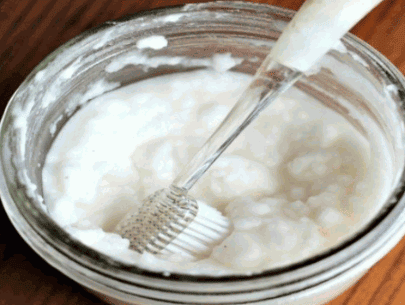
Wet The Chairs
Before applying the cleaning solution, it is important to wet the chairs thoroughly to help loosen dirt and grime.
Using a garden hose is an effective way to accomplish this task. Start by adjusting the nozzle to a gentle spray setting to avoid damaging the chair materials.
Aim the hose towards the seat and backrest, allowing water to flow over the surfaces, ensuring every nook and cranny is targeted. This initial wetting introduces moisture, which not only helps to dislodge stubborn dirt particles but also prepares the surfaces for the cleaning solution to adhere better.
Without this crucial step, you may find that the cleaning process becomes less effective, as the buildup can remain firmly in place, making it challenging to achieve that pristine appearance.
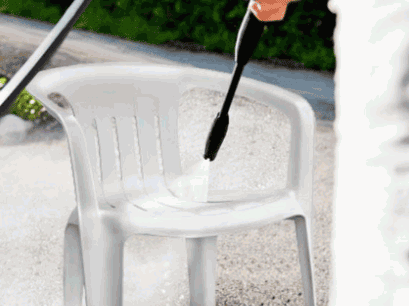
Scrub The Chairs
Using a soft-bristled brush, scrub the chairs with the prepared cleaning solution to effectively remove stains and dirt buildup.
When tackling grime, it’s essential to focus on the crevices and seams where dirt tends to accumulate most.
Start by applying the cleaning solution generously to the areas requiring attention, ensuring it penetrates thoroughly.
Next, using a soft-bristled brush, gently scrub each section in circular motions to lift away stubborn stains.
Pay special attention to armrests and the undersides of chairs, which often harbour unseen dirt.
After scrubbing, wipe down the surface with a damp cloth to remove any residue from the solution, ensuring a clean finish.
For best results, consider rinsing the brush frequently and alternating sides to prevent re-depositing grime.
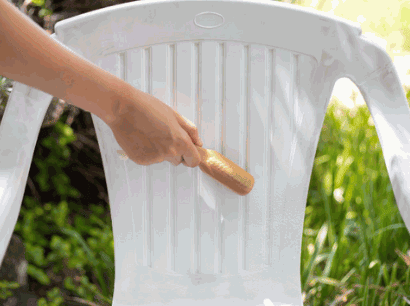
Rinse Off The Cleaning Solution
Once you have scrubbed the chairs thoroughly, rinse off the cleaning solution using a garden hose to ensure no residue is left behind, as any lingering solution can create unsightly streaks or spots that mar the appearance of your furniture and diminish its overall aesthetic appeal.
To perform an effective rinse, it's important to follow a few key steps:
- Begin at the top of each chair and work your way down, allowing the water to wash away the cleaning product in a downward direction.
- Adjust the nozzle on the garden hose to create a gentle spray or a strong stream, depending on the level of rinsing needed.
- Thoroughly rinse all crevices, ensuring no cleaning solution gets trapped in seams or joints. This will not only help prevent streaks but also maintain the integrity of the chair's materials over time.
After rinsing, let the chairs dry completely before using them again, ensuring they look their best without any residue causing unsightly marks.
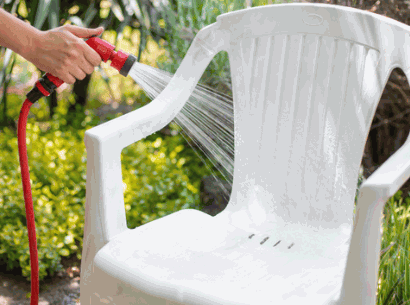
Dry The Chairs
After rinsing, dry the chairs with a clean cloth or microfibre towel to prevent water spots and enhance their appearance.
It’s essential to follow several best practices for drying to ensure that the furniture not only looks its best but also remains protected from moisture-related issues in the long term. Begin by gently blotting the surface instead of rubbing, as this technique helps in absorbing excess water without damaging the finish. When drying, consider the following tips:
- Use separate towels for different types of chairs, especially if some are made from wood and others from fabric.
- Avoid direct sunlight for drying, as it can cause cracking or fading in certain materials.
- For outdoor chairs, make sure to store them in a sheltered area after they’ve dried to avoid re-exposure to moisture.
By adhering to these recommendations, one can maintain the aesthetic appeal and longevity of the chairs, preventing any undesirable effects of dampness such as mould or peeling paint.
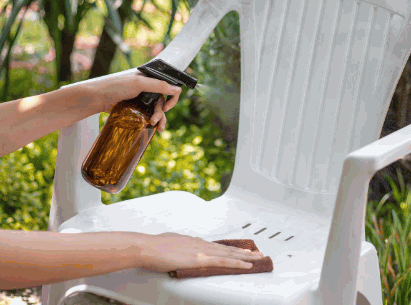
Tips And Tricks
Cleaning white resin garden chairs can be made easier and more effective with a few tips and tricks tailored for outdoor furniture maintenance.
Use A Pressure Washer For Tough Stains
For particularly stubborn stains, using a pressure washer can save time and deliver excellent results when cleaning white resin patio chairs.
The power of a pressure washer lies not only in its ability to remove dirt and grime but also in the specific techniques that enhance cleaning efficiency. By adjusting the spray pressure and using the correct nozzle, one can effectively tackle various stains such as mould, mildew, and dirt build-up.
For optimal results, it is advisable to keep the nozzle at a safe distance from the surface to prevent damage. Incorporating cleaning solutions designed for pressure washing can enhance:
- stain removal
- surface restoration
- and prolong the lifespan of patio furniture.
In addition, this method is environmentally friendly compared to traditional scrubbing which requires harsh chemicals. Understanding these aspects will not only make the job easier but ensure a thorough clean.
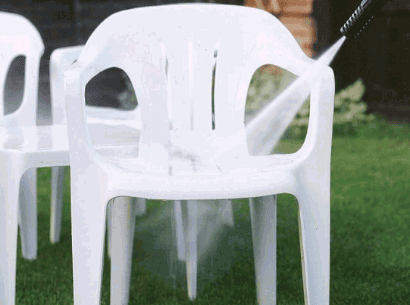
Avoid Using Abrasive Cleaners
To maintain the quality of your white plastic chairs, it is crucial to avoid using abrasive cleaners that can scratch or damage the surface.
These harsh products often contain gritty substances designed to tackle tough stains, but their aggressive nature can leave your furniture looking worse for wear. Instead of risking annoying scratches that could cause discomfort or deterioration over time, it is far better to explore gentler alternatives.
Consider using a mixture of warm water and mild washing-up liquid for regular cleaning. This solution effectively lifts dirt without compromising the integrity of the material. For more stubborn stains, a paste made from bicarbonate of soda and water offers a soft abrasive action that is safe for outdoor surfaces. Here are some recommended methods:
- Use a soft cloth or sponge to apply your cleaning solution.
- Rinse thoroughly with clean water to remove any residue.
- Avoid stiff bristle brushes that may cause scratches.
By embracing these safer options, it is easy to enjoy your outdoor space without worrying about damage to your beloved outdoor furniture.
Regularly Clean Your Chairs
Establishing a regular cleaning routine for your white plastic chairs is key to preventing stains and maintaining their appearance.
Incorporating consistent maintenance intervals not only enhances the visual appeal of your chairs but also significantly reduces the build-up of grime, which can lead to more complicated cleaning challenges down the line.
Regularly dusting and wiping down surfaces helps preserve their pristine condition, ensuring that they remain inviting for gatherings and daily use alike. With proper care, you can actually:
- extend the lifespan of your chairs
- reduce wear and tear
- save on replacement costs
By fostering a habit of scheduled cleaning, you are investing in the longevity of your furniture while also creating a healthier environment for your family and guests.
Dealing with a stubborn clog in your drain and considering using a drain cleaner to solve the problem?
Before you reach for that bottle of chemical solution, it’s important to understand how drain cleaners work and the potential risks they pose to your pipes.
We will discuss the different types of drain cleaners, and the risks associated with each, and provide tips on how to prevent damage to your pipes.
Explore alternative methods for unclogging your drains that are safer for your plumbing system and learn more about the dos and don’ts of using drain cleaners.
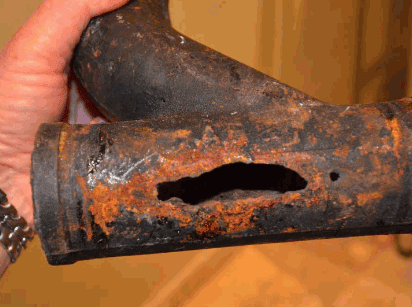
What Is Drain Cleaner?
Drain cleaner is a solution or product used to clear blockages in pipes caused by blockages, which typically consist of hair, organic material, or other debris that accumulates over time, leading to slow draining or completely blocked drains.
When a drain becomes blocked, it can disrupt the flow of wastewater, causing unpleasant odours, leaks, or even structural damage. The primary purpose of drain cleaners is to break down the blockages, allowing water to flow freely through the pipes again. Common types of blockages that drain cleaners address include hair clumps, grease buildup, soap scum, and food remnants. Depending on the severity of the blockage, various drain cleaner formulas may be used.
Discover: What Is Drain Jetting
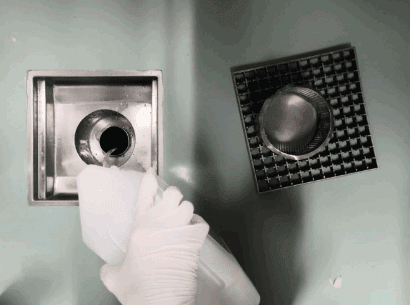
How Does Drain Cleaner Work?
Drain cleaners work by initiating chemical reactions that break down the materials causing blockages in your pipes, such as sodium hydroxide reacting with organic material to dissolve and clear the blockage.
When sodium hydroxide comes into contact with water, it generates heat, which helps in breaking down the blockage. This strong alkali works by converting fats and grease into soap, allowing them to be easily washed away.
Another common ingredient in drain cleaners is sulphuric acid, which is effective in dissolving tough blockages caused by hair and other substances. Its corrosive nature helps in breaking down the blockage, but it's essential to handle it with extreme care due to its hazardous properties.
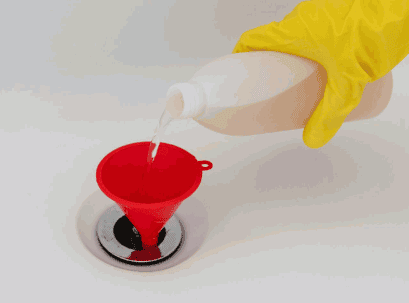
What Are The Types Of Drain Cleaners?
There are three main types of drain cleaners available on the market:
- Chemical drain cleaners
- Enzymatic drain cleaners
- Hydro-mechanical drain cleaners
Each is designed to address blockages in pipes through different mechanisms and safety considerations.
Chemical Drain Cleaners
Chemical drain cleaners often contain strong substances like sodium hydroxide and sodium hypochlorite (bleach), which react with blockages to break them down chemically and clear the pipes.
In chemical drain cleaners, sodium hydroxide acts as a powerful alkali that dissolves organic matter, grease, and hair that causes obstructions in pipes. On the other hand, sodium hypochlorite (bleach) is effective in breaking down proteins and killing bacteria within the blockages.
When these chemicals are poured down the drain, they produce heat through exothermic reactions, aiding in dissolving the blockages effectively. The strength of these substances comes with potential risks, as they can cause skin and eye irritation if not handled carefully.
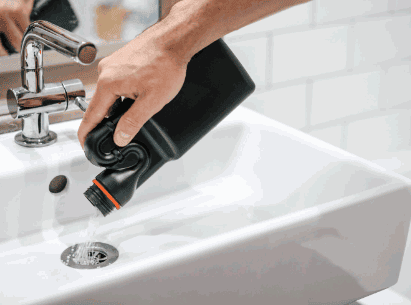
Enzymatic Drain Cleaners
Enzymatic drain cleaners use natural enzymes and bacteria to break down organic material that causes blockages in pipes, providing a safer and environmentally friendly alternative to chemical drain cleaners.
These cleaners are effective in targeting common culprits of blockages like grease, hair, soap scum, and food particles, ensuring thorough cleaning.
Enzymatic drain cleaners work by releasing enzymes that digest the organic matter, breaking it down into smaller particles that can easily flow through the pipes.
This method not only clears the current blockage but also helps prevent future build-ups. Unlike harsh chemical cleaners that can corrode pipes over time, enzymatic cleaners are gentle on plumbing systems, making them a preferred choice for maintaining pipe integrity.
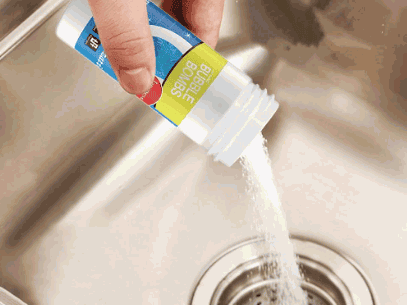
Hydro-Mechanical Drain Cleaners
Hydro-mechanical drain cleaners, such as drain snakes, use physical force to dislodge blockages in pipes, making them a powerful tool in the plumbing industry for clearing obstructions.
When dealing with stubborn blockages, the flexible coil of the drain snake can navigate through bends and turns in the pipes, reaching deep into the plumbing system. The sharp end of the snake seizes debris, tree roots, or any other blockages, allowing the user to pull them out effortlessly. This technique not only efficiently removes blockages but also helps prevent future problems by thoroughly cleaning the pipe walls.
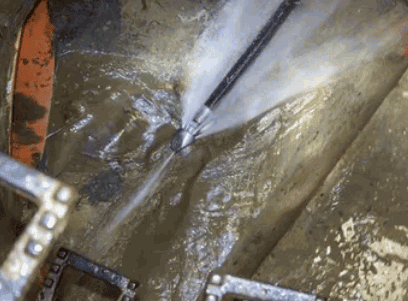
Can Drain Cleaner Damage Pipes?
Whilst drain cleaners can be effective at clearing blockages, they can also damage pipes, especially if used improperly or in excessive amounts, with chemical reactions potentially degrading materials like PVC pipes.
Acid-based drain cleaners, for example, can be particularly harsh on pipes, corroding the walls and weakening the structure over time. This can result in leaks, corrosion, and ultimately pipe failure if not dealt with promptly.
The chemicals in drain cleaners can react unpredictably with different pipe materials, leading to unintended consequences. For example, metal pipes may corrode when exposed to specific drain cleaner formulas, causing thinning and weakening of the pipe walls.
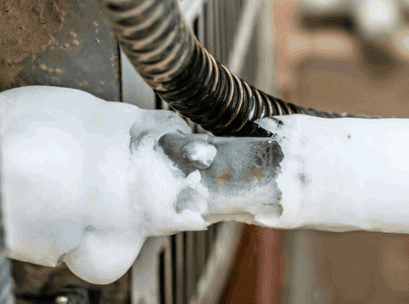
What Are The Risks Of Using Chemical Drain Cleaners?
Using chemical drain cleaners comes with significant risks, including chemical burns, environmental damage, and the corrosive effects on pipes and other plumbing components if not handled properly.
Chemical drain cleaners can pose serious dangers if not used with caution. The high toxicity of these cleaners can result in severe skin irritation or burns upon contact. The harsh chemicals can cause irreversible damage to the environment if disposed of improperly, contaminating water sources and harming aquatic life.
The corrosive nature of these cleaners can lead to long-term damage to your plumbing system, potentially causing leaks or even pipe bursts over time. It's crucial to follow safety guidelines to protect yourself, your property, and the environment.
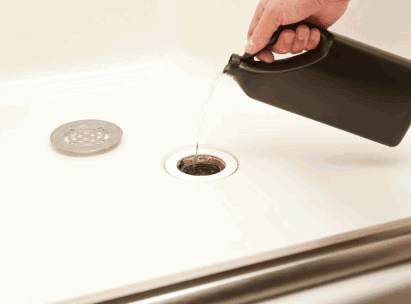
What Are The Risks Of Using Enzymatic Drain Cleaners?
Whilst generally safer than chemical options, enzymatic drain cleaners can still pose risks if used incorrectly, such as inefficiency in clearing blockages and potential buildup in pipes over time.
Enzymatic drain cleaners are more suitable for organic clogs like grease, food particles, and hair. They may not be as effective with mineral deposits or non-organic materials.
Proper application is crucial to ensure they work well without causing damage. It's important to follow the manufacturer's instructions carefully and avoid overusing these products. Incorrect use can lead to partial blockages, prolonging the issue and potentially damaging the pipes. Regular maintenance and inspection are essential when using enzymatic cleaners to prevent any long-term negative effects on the plumbing system.
What Are The Risks Of Using Hydro-Mechanical Drain Cleaners?
Hydro-mechanical drain cleaners, including drain snakes, pose risks such as potential physical damage to pipes or fixtures if used with excessive force or without proper technique.
One of the key physical risks associated with using hydro-mechanical drain cleaners is the potential for causing cracks or breaks in the pipes themselves, leading to costly repairs and potentially extensive water damage. Proper technique is crucial to avoid inadvertently damaging the plumbing system, as aggressive or improper use can result in leaks, blockages, or even complete pipe failure. It's important to understand the specific requirements and limitations of each type of drain cleaner to ensure safe and effective use while protecting your plumbing infrastructure.
How To Prevent Damage To Pipes When Using Drain Cleaner?
Preventing damage to pipes when using drain cleaner involves following specific precautions such as:
- Carefully reading instructions
- Wearing protective gear
- Using the cleaner as a last resort
- Performing regular maintenance on your plumbing system to avoid severe blockages
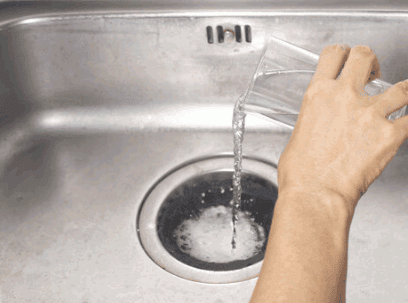
Read The Instructions Carefully
One of the most critical steps in using a drain cleaner safely is to read and follow the instructions provided on the product label carefully to ensure proper application and avoid damaging pipes.
It cannot be emphasised enough how crucial it is to adhere to these instructions, as they are specifically designed to protect both your plumbing system and your safety.
Many drain cleaners contain powerful chemicals that can be effective in clearing blockages, but if not used correctly, they can also pose risks to the pipes and the user. By carefully following the guidelines outlined by the manufacturer, you can prevent accidents and ensure the product works efficiently without causing harm.
Use Protective Gear
Wearing protective gear, such as gloves and goggles, is essential when handling drain cleaners to prevent chemical burns and ensure overall safety during the cleaning process.
Wearing a respirator is highly recommended to protect the respiratory system from inhaling harmful fumes or airborne particles released during the cleaning process. A chemical-resistant apron or suit can provide an extra layer of protection against accidental spills or splashes that could come into contact with the skin, causing irritation or burns.
Protective footwear, such as closed-toe shoes with non-slip soles, is crucial to prevent accidental slips or falls, especially in areas where the floor might become slippery from spillage of the cleaning solution.
By using the appropriate protective gear and following safety guidelines, you can significantly reduce the risks associated with handling drain cleaners and ensure a safe cleaning experience.

Use Drain Cleaner As A Last Resort
Using a drain cleaner should be a last resort after attempting other blockage removal methods to minimise the risk of damaging pipes and ensure safety.
One reason it's advisable to explore other techniques before resorting to drain cleaners is to prevent potential harm to your plumbing system. Harsh chemical cleaners can corrode pipes over time, leading to leaks and costly repairs.
The repeated use of drain cleaners can harm the environment when these chemicals are washed away into water systems. Opting for eco-friendly options such as homemade vinegar and bicarbonate of soda solution not only keeps your pipes safe but also reduces your carbon footprint.
Regularly Maintain Your Pipes
Regular maintenance of your pipes, including periodic inspections and cleaning, helps prevent severe blockages and reduces the need for strong drain cleaners, ensuring long-term safety and functionality.
One of the crucial aspects of pipe maintenance is scheduling regular checks to identify potential issues early on before they escalate into major problems. By carrying out routine inspections, you can identify minor leaks, corrosion, or blockages before they result in expensive repairs.
Incorporating preventative measures such as using hair traps in the shower, avoiding flushing non-biodegradable items down the loo, and being careful about what goes down the plughole can significantly extend the lifespan of your pipes and plumbing system.
Investing time and effort in maintaining your pipes can save you money in the long term by avoiding emergency plumbing services and extensive repairs. By adopting a proactive approach to pipe maintenance, you can enjoy a steady and uninterrupted flow of water throughout your home, without the worry of sudden blockages or leaks disrupting your daily routine.
What Are The Alternatives To Using Drain Cleaner?
- Several alternatives to using chemical drain cleaners can effectively clear blockages, such as:
- Boiling water
- A mixture of bicarbonate of soda and vinegar
- A plumber's friend
- Or a drain auger
Boiling Water
Pouring boiling water down the plughole can help dissolve minor blockages caused by grease or soap buildup, offering a simple and safe alternative to chemical drain cleaners.
Boiling water is a versatile and eco-friendly method to tackle blockages in drains, especially in kitchens where grease often accumulates. By using boiling water, you can effectively break down these sticky substances without harsh chemicals that can potentially harm your pipes or the environment.
It is important to note that boiling water works best for organic blockages, such as food particles and soap scum, rather than inorganic blockages like hair. The high temperature of boiling water can easily melt away the greasy residues, making it an ideal first step in unblocking kitchen sinks and bathroom drains.
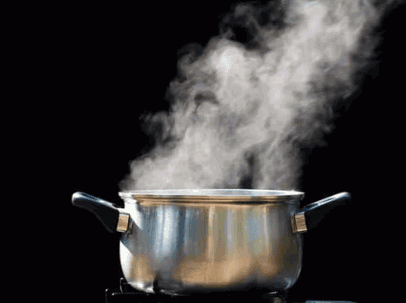
Baking Soda And Vinegar
A combination of bicarbonate of soda and vinegar creates a fizzy reaction that can help break down blockages in pipes, making it a popular and environmentally friendly alternative to chemical drain cleaners.
This DIY method is not only effective but also safe for your pipes. To use this natural blockage-clearing technique, start by pouring bicarbonate of soda down the plughole followed by a generous amount of vinegar. The mixture will start fizzing and bubbling, helping to dislodge the blockage. Leave it to sit for about 30 minutes to allow it to work its magic.
Once the bubbling subsides, flush the plughole with hot water to wash away the loosened debris. This method not only clears blockages effectively but also minimises the need for harsh chemicals, reducing environmental impact.
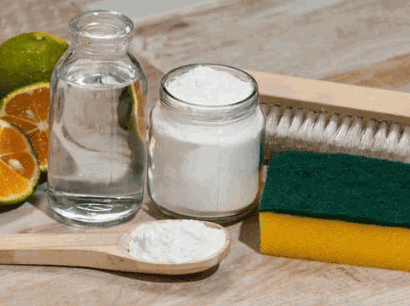
Plunger
Using a plunger is a manual method to dislodge blockages in pipes, utilising suction and pressure to clear blockages effectively without the need for chemicals.
One of the key benefits of using a plunger is its simplicity and ease of use. It's a versatile tool that can be used in various plumbing fixtures like sinks, toilets, and showers. To maximise its effectiveness, ensure a tight seal between the plunger and the drain opening by pressing down firmly and creating a vacuum. The plunger's design allows for quick and efficient clearance of minor to moderate blockages, making it a go-to solution for many homeowners before resorting to professional help.
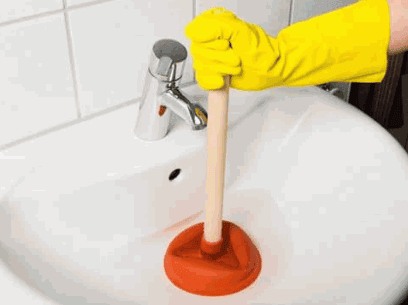
Plumbing Snake
A plumbing snake, also known as a drain snake, is a long, flexible tool used to reach deep into pipes and manually break up blockages, making it an effective mechanical alternative to chemical drain cleaners.
When using a plumbing snake, it is important to first locate the blockage within the drain. Once identified, insert the snake into the pipe and rotate the handle to manoeuvre it through the obstruction. The snake's serrated edges provide effective gripping to dislodge debris, hair, grease, or other materials causing the blockage.
One of the main benefits of using a plumbing snake is its ability to target and clear tough blockages that might be challenging for other methods to remove. Unlike harsh chemicals that may damage pipes or harm the environment, a plumbing snake offers a safe, eco-friendly solution for drain cleaning.
Professional plumbers often rely on plumbing snakes as a versatile tool in their arsenal. They use specialised snakes with varying lengths and thicknesses to tackle different types of blockages efficiently, ensuring thorough cleaning without causing harm to the plumbing system.
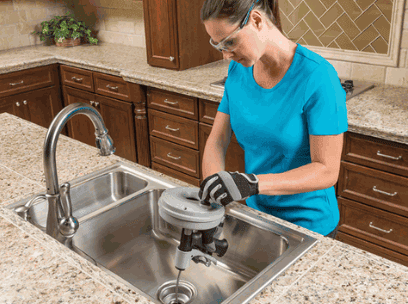
Are you tired of dealing with clogged drains in your home?
From hair buildup to grease and oil accumulation, blocked drains can be a major headache.
In this article, we will explore why drains get blocked, the common signs to look out for, and how you can prevent them from clogging up in the first place.
We will also discuss the most common causes of blocked drains and provide you with practical tips on how to clear them yourself.
If you're looking to keep your drains flowing smoothly, keep reading to find out more!
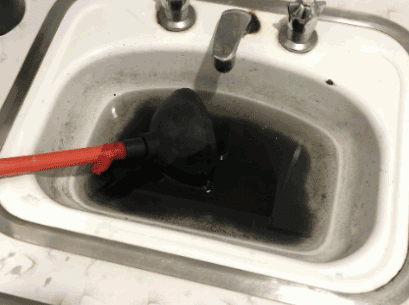
Why Do Drains Get Blocked?
Drains get blocked for a variety of reasons, including the accumulation of waste materials like food waste, hair, and grease, which can lead to significant drainage issues if not addressed properly, especially in places like the UK where companies offer specialised services to manage drain blockages in both domestic and commercial drain systems.
Uncover more: Can Drain Cleaner Damage Pipes
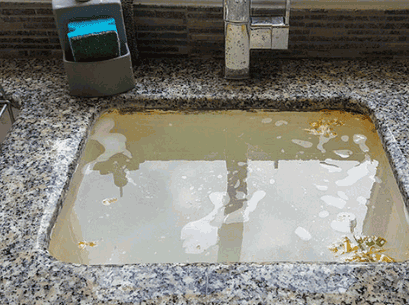
What Are The Signs Of A Blocked Drain?
One of the most common signs of a blocked drain is slow water drainage in sinks, showers, or toilets, often accompanied by unpleasant odours emanating from the affected area.
Plus slow water drainage and unpleasant odours, a blocked drain might also exhibit other warning signs. These can include gurgling sounds coming from the drains when water is running, water pooling around drains due to improper flow, and toilets that are difficult to flush. It's crucial to pay attention to these signals as they indicate that a blockage is forming and addressing it early on can prevent more severe blockages that could lead to costly repairs.
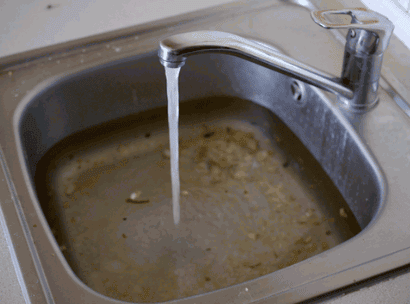
How Can You Prevent Drains From Getting Blocked?
Preventing drains from getting blocked can save you from significant inconvenience and potential damage to your plumbing system, and it can be achieved through regular maintenance, proper waste disposal, and the use of drain guards.
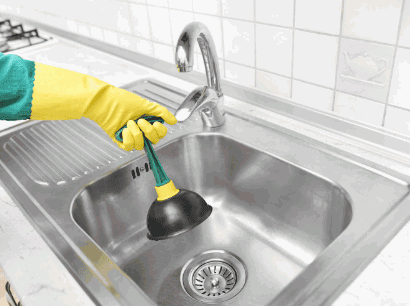
Regular Maintenance
Regular maintenance of your drainage system, including the use of tools like a drain brush and an electric softener, can help keep U-bends and other critical parts of the plumbing system free from blockages.
Aside from using tools like a drain brush and electric softener, there are various types of maintenance activities that can contribute to the smooth operation of your drainage system.
- Periodic inspections play a crucial role in detecting early signs of blockages or leaks, allowing for timely intervention before major issues arise.
- Implementing regular cleaning routines, such as removing debris and flushing with hot water, helps prevent the build-up of grease and other substances that could lead to blockages.
The consistent use of maintenance tools and techniques not only ensures the longevity of your plumbing system but also saves you from costly repairs and inconveniences caused by sudden blockages.
Proper Waste Disposal
Proper waste disposal practices, such as avoiding the disposal of food waste and grease down the sink, are crucial for maintaining a fully functional plumbing system.
Improper waste disposal not only clogs drains and sewer lines but can also lead to environmental pollution and health hazards. When food scraps and grease accumulate in the drains, they solidify and create blockages, causing water backups and unpleasant odours. Over time, this can result in costly repairs and potential damage to the entire plumbing infrastructure.
To prevent such issues, individuals can adopt responsible waste management techniques. Separating organic waste for composting, recycling materials like paper and plastics, and properly disposing of hazardous substances can significantly reduce strain on the drain system.
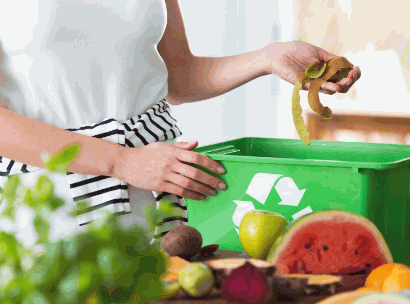
Use Drain Guards
Using drain guards in areas like showers and kitchen sinks can effectively trap hair and food particles, preventing them from entering the drainage system and causing blockages.
There are various types of drain guards available for different purposes, such as mesh screens, plastic strainers, and metal grates. Mesh screens are ideal for catching finer particles like hair, while plastic strainers are great for capturing larger debris such as food scraps.
In the bathroom, shower drain guards are essential to prevent hair clogs, while in the kitchen, sink drain guards help to stop food waste from accumulating and causing blockages. Regularly cleaning these guards is crucial to ensure they continue to function effectively and maintain optimal drainage flow throughout the household.
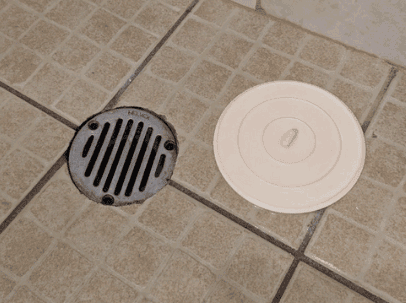
Be Mindful Of What You Flush
Being mindful of what you flush down the toilet is essential, as foreign objects can cause serious blockages in the toilet drain and overall drainage system.
Common items such as wet wipes, sanitary products, and cotton buds should never be flushed down the toilet as they do not break down easily in water. When these items accumulate in the drainage system, they can lead to blockages and blockages, resulting in costly repairs and potential environmental damage.
By practising careful flushing habits and only disposing of toilet paper and human waste in the toilet, you contribute to the long-term health of the drainage system. This simple act not only prevents blockages but also helps in maintaining the efficiency and sustainability of the sewage network.
What Are The Common Causes Of Blocked Drains?
Blocked drains can be caused by a variety of factors including the accumulation of calcium and magnesium deposits, improper disposal of waste, and natural interventions like tree root invasions which all affect the overall efficiency of the drain system.
Hair Buildup
Hair build-up in the shower and bathroom drain is one of the leading causes of blockages, often accumulating over time and forming clogs that impede water flow.
When you shower or wash your hair, loose strands tend to fall out and wash down the drain. Over time, these strands can combine with soap scum and other debris, creating a tangled mess that blocks proper drainage. As this build-up increases, you may notice water draining more slowly or even backing up in the shower or sink.
To avoid this common issue, consider using drain guards to catch hair before it enters the drain. Regularly cleaning your drain by removing accumulated hair and debris can also help prevent blockages and maintain efficient water flow.
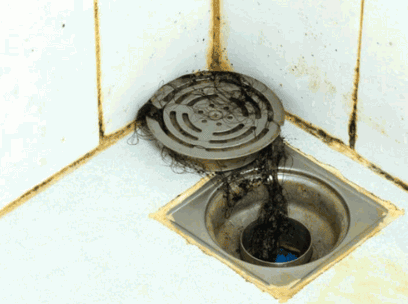
Grease And Oil Buildup
Grease and oil build-up in kitchen sinks can lead to severe blockages, as these substances cool and solidify in the drain pipes, creating a sticky layer that attracts other debris.
This can result in slow-draining sinks, foul odours, and even complete blockages if left unattended. The properties of grease and oil make them prone to hardening and clumping together, forming stubborn blockages that are challenging to remove. To prevent these issues, it is essential to use fat traps to catch grease before it enters the drainage system.
Implementing proper disposal methods for used cooking oil, such as collecting it in a container and disposing of it in the bin, can significantly reduce the risk of blockages caused by grease build-up. Avoid pouring grease down the sink at all costs – opt for environmentally friendly alternatives like using a kitchen roll to wipe excess grease from dishes before washing them.
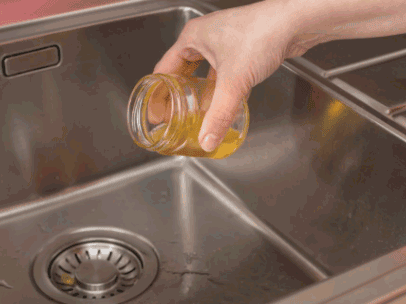
Tree Roots
Tree roots can invade the drain system, causing significant blockages and damage to the plumbing system as they grow and expand in search of water.
As tree roots penetrate the drain system, they can easily clog pipes and obstruct water flow. Signs of root-related blockages include slow drainage, gurgling sounds, or recurrent toilet blockages. To prevent these issues, regular inspections of the drainage system are essential to detect early signs of infiltration.
One effective solution to combat tree root invasions is the use of root barriers. These barriers can be installed underground to prevent roots from entering and damaging the drain pipes. By acting as a physical barrier, root barriers redirect root growth away from the plumbing system, preserving its integrity and functionality.
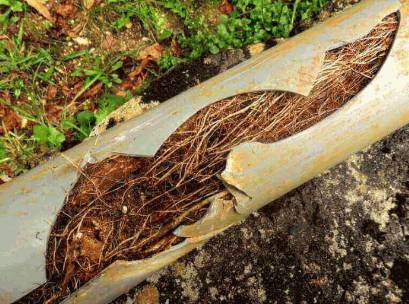
Foreign Objects
Foreign objects flushed down the loo or washed down sinks can cause major blockages, obstructing the flow of water and leading to significant drainage issues.
Among the common culprits are items like disposable wipes, cotton pads, dental floss, and sanitary products which, when disposed of inappropriately, accumulate and create blockages in the plumbing system. These blockages not only result in slow drainage and foul odours but can also lead to costly repairs and potential damage to pipes. To prevent such issues, it is crucial to avoid flushing these items and instead dispose of them in the bin.
Proper disposal methods not only maintain the efficiency of your plumbing but also contribute to a sustainable environment.
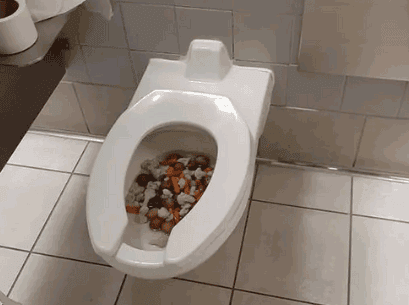
How To Clear A Blocked Drain?
Clearing a blocked drain can often be done using simple tools and methods such as plungers, chemical unblockers, and drain rods, although sometimes more advanced techniques may be required to address severe or stubborn blockages in the pipes.
Plunger
A plunger is a simple yet effective tool for clearing blockages in sinks and toilets by creating a suction that dislodges the obstruction.
When using a plunger on a sink, ensure you cover the overflow opening with a wet cloth to create a stronger seal and maximise suction. For toilets, make sure the plunger cup completely covers the drain opening. A gentle yet firm push-and-pull motion helps build up pressure, eventually dislodging the clog. If the plunger doesn't work initially, try adding petroleum jelly to the rim for a better seal. Remember to clean and sanitise the plunger after each use to prevent the spread of germs. Common issues like splashing can be minimised by using a slow and steady technique.
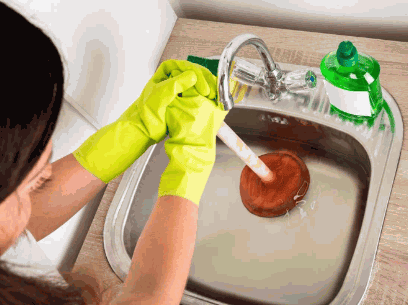
Baking Soda And Vinegar
A mixture of bicarbonate of soda and vinegar can be a natural and effective solution for cleaning and clearing minor drain blockages, utilising the chemical reaction between these two substances to break down debris.
- When using this method, start by pouring about a cup of bicarbonate of soda down the drain, followed by a cup of vinegar.
- Let the mixture sit for about 30 minutes to allow the fizzing action to work its magic and break up any clogs.
- After the waiting period, flush the drain with hot water to wash away the loosened debris.
This approach not only helps to unblock drains but is also safe for the environment and poses no risks to your health compared to harsh chemical drain cleaners. Plus, it's an affordable and readily available solution that can be used regularly for maintenance purposes.
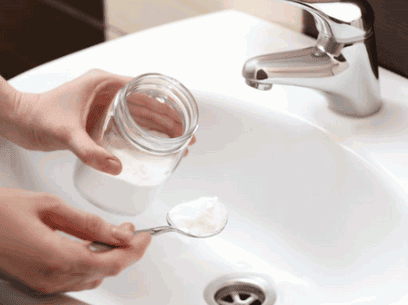
Hot Water And Dish Soap
Using hot water and washing-up liquid is an effective method for dissolving grease blockages in kitchen sinks, as the combination helps to break down and flush away greasy residues.
For optimal results, start by boiling a large pot of water, ensuring it's at a near-boiling temperature. Once ready, carefully pour the hot water down the plughole to help soften the hardened grease accumulation. Next, add a few generous squirts of washing-up liquid into the sink.
Let the soap sit for about 15-20 minutes to allow it to penetrate the grease blockages. The hot water and soap work together to emulsify the grease, making it easier to wash away. After the waiting period, flush the plughole with more hot water to clear the loosened residue down the pipes.
This method might not be effective for severe blockages or if the pipes are severely clogged. In such cases, it's advisable to consult a professional plumber to avoid any potential damage to the plumbing system.
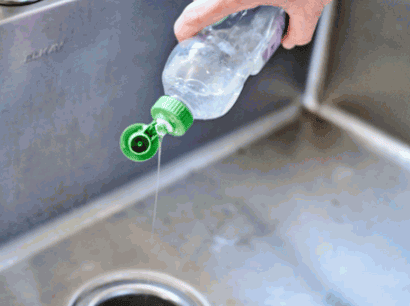
Drain Snake
A drain snake, also known as a plumber's auger, is a versatile tool for reaching and removing blockages that are deep within the pipes, particularly in U-bends and other hard-to-reach areas.
When using a drain snake, it's important to start by inserting the tool into the drain slowly and steadily, avoiding any sudden movements that could cause damage to the pipes. Correct usage of the snake involves feeding it into the blocked drain while turning the handle clockwise. If you come across resistance, gently rotate the snake to help it navigate past obstructions. Remember to wear gloves to protect your hands from any debris that may be dislodged during the process.
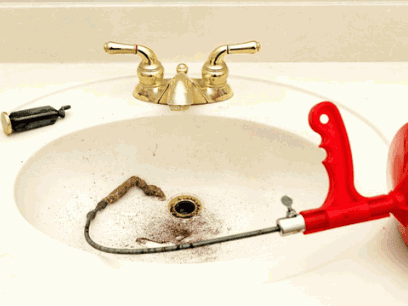
When To Call A Professional?
Knowing when to call a professional for drain issues is crucial, especially in cases of severe blockages or recurring problems that DIY methods cannot resolve, as companies like BDS Drainage have the expertise and tools to handle complex plumbing system issues effectively.
Signs that indicate the need for professional intervention include persistent blockages that keep coming back even after attempted fixes, multiple clogged drains throughout the property, foul odours emanating from the plumbing system, or slow drainage in several areas.
Professional services not only provide immediate solutions to these pressing issues but also offer long-term benefits such as preventing further damage to the plumbing infrastructure, reducing the risk of costly repairs in the future, and improving the overall efficiency and functionality of the system.
If you've ever experienced a stubborn clog in your drains, you know how frustrating it can be.
Drain jetting can be a lifesaver in such situations. Let's explore what drain jetting is, how it works, its benefits, different types, when it should be used, safety precautions, and how to prepare for it.
To keep your drains flowing smoothly, continue reading to learn more about this effective plumbing solution.
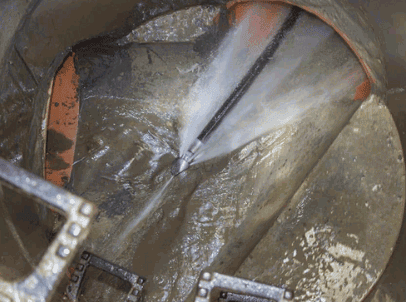
What Is Drain Jetting?
Drain jetting is a powerful cleaning method that utilises high-pressure water jets to clear blockages in pipes and drain systems, providing an effective solution to common drainage issues faced by homeowners and businesses in the UK.
When a blockage occurs in a drain or pipe, it can lead to unpleasant odours, slow drainage, and even flooding. Drain jetting works by sending pressurised water streams through the pipes, effectively dislodging debris, grease, and other build-ups that are causing the obstruction. The force of the water is strong enough to break through even stubborn blockages, ensuring that the entire system is thoroughly cleaned. The Water Jetting Association (WJA) sets industry standards and promotes best practices in drain jetting to ensure efficient and safe operation.
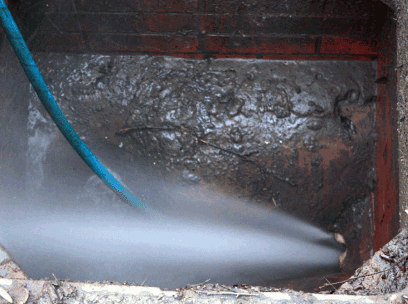
How Does Drain Jetting Work?
Drain jetting works by using specialised equipment to direct high-pressure water through hoses and nozzles to break down and remove blockages from pipes and drain systems.
Typically, a professional drain jetting service begins by conducting an inspection of the pipes to identify the location and nature of the blockage. Once located, the high-pressure water is then directed through the specially designed nozzles attached to flexible hoses. These nozzles can vary in shape and size depending on the type of blockage being tackled, such as root intrusion or grease buildup.
The force of the water, which can reach up to thousands of pounds per square inch, effectively clears the obstruction by dislodging debris or flushing out accumulated materials. In some cases, additional equipment like cameras may be used to monitor the process and ensure the blockage is completely cleared, resulting in improved drainage flow.
Gain insights: How To Stop Drains Getting Blocked
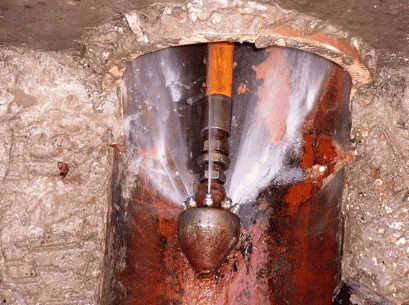
What Are The Benefits Of Drain Jetting?
Drain jetting offers numerous benefits, including the ability to clear tough blockages, prevent future blockages, and provide an environmentally friendly and cost-effective solution for maintaining clean and functional drain systems.
Clears Tough Blockages
One of the primary benefits of drain jetting is its ability to clear tough blockages, including stubborn fatbergs and debris, by using high-pressure water jets to dislodge and remove the material from the pipes.
Drain jetting is particularly effective in cases where traditional methods like snaking or chemicals may not be sufficient. The high-pressure water jets can break up even the most stubborn clogs, such as grease, sludge, and mineral build-up.
This method is environmentally friendly as it does not involve the use of harsh chemicals that can harm the pipes or the ecosystem. By simply using the force of water, drain jetting provides a powerful yet safe solution to keep your plumbing system running smoothly.
Prevents Future Blockages
Regular drain jetting helps prevent future blockages by thoroughly cleaning the pipes and removing any build-up that could lead to obstructions over time.
By incorporating drain jetting into your regular maintenance routine, you are ensuring that your drain system remains free from blockages and obstructions, which can save you time and money in the long term. This proactive approach helps to extend the lifespan of your pipes and prevents costly repairs that may arise from neglecting drain maintenance. Through the high-pressure water jetting process, not only do you clear out existing debris, but you also prevent the accumulation of grease, grime, and other materials that can cause blockages.
Environmentally Friendly
Drain jetting is an environmentally friendly cleaning method as it primarily uses water, avoiding the need for harsh chemicals that can be harmful to the environment.
Compared to traditional drain cleaning methods that rely heavily on chemical-based solutions, which can pollute water sources and harm aquatic life, drain jetting stands out as a sustainable alternative.
By simply utilising pressurised water to clear blockages and build-ups in pipes, drain jetting eliminates the risk of introducing harmful substances into the ecosystem, making it a preferred choice for environmentally conscious individuals and businesses.
Cost-Effective
Drain jetting is a cost-effective solution for blockage removal and maintenance, as it reduces the need for frequent repairs and prolongs the lifespan of pipes and drain systems.
When considering the long-term benefits of drain jetting, it becomes evident that investing in this preventative maintenance technique can ultimately save homeowners and businesses significant amounts of money. By regularly clearing out debris and buildup in the pipes through high-pressure water streams, potential blockages, and blockages are minimized, preventing the occurrence of major issues that could result in costly repairs. The thorough cleaning provided by drain jetting helps improve the overall efficiency of the drainage system, reducing the likelihood of emergencies and the associated expenses. In essence, the upfront cost of drain jetting is a wise investment that pays off through extended durability and diminished repair needs.
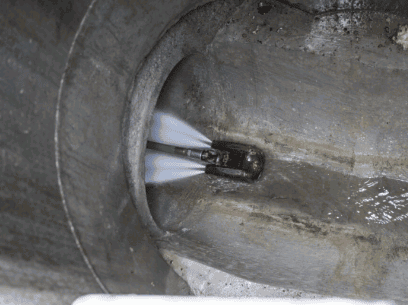
What Are The Different Types Of Drain Jetting?
There are several types of drain jetting methods available, each suited to different situations and types of blockages, including high-pressure water jetting, low-pressure water jetting, and sewer jetting.
High-Pressure Water Jetting
High-pressure water jetting is a powerful cleaning method that uses extremely high pressure to remove tough blockages and thoroughly clean the inside of pipes.
Using a specialised machine, water is pressurised to up to 20,000 pounds per square inch (psi) or more. This immense pressure allows the jet of water to effortlessly cut through debris, mineral deposits, grease, and even tree roots that may be obstructing the pipes. The high-pressure water jetting process is highly effective in clearing blockages and residues that other methods might struggle with, making it a preferred choice for industrial, commercial, and municipal pipe cleaning. It is ideal for maintaining drainage lines, sewers, and surface water systems, ensuring optimal flow and preventing costly blockages and damage.
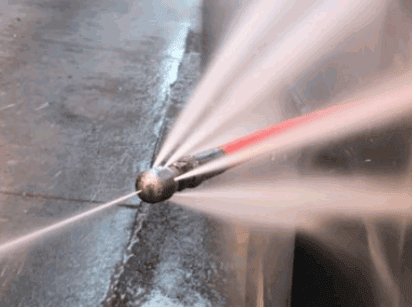
Low-Pressure Water Jetting
Low-pressure water jetting is used for more delicate cleaning tasks where high pressure might damage the pipes or the system being cleaned.
One of the main advantages of low-pressure water jetting is its ability to provide a gentle yet effective cleaning solution for sensitive surfaces, such as painted walls, delicate machinery, or historical buildings. This method is often preferred in industries like food and beverage, pharmaceuticals, and electronics, where precision cleaning without causing any harm is crucial. Additionally, low-pressure water jetting is also ideal for applications where the primary goal is to remove surface contaminants rather than cutting through tough materials.
Sewer Jetting
Sewer jetting involves using high-pressure water jets to clean and clear blockages in sewer lines, ensuring that the sewer system functions properly.
This method of sewer maintenance is crucial for preventing issues such as sewage backups, foul odours, and potential health hazards caused by blocked or damaged sewer lines. By effectively removing debris, grease, and other build-ups, sewer jetting helps to maintain the flow of wastewater and prevent costly repairs down the line.
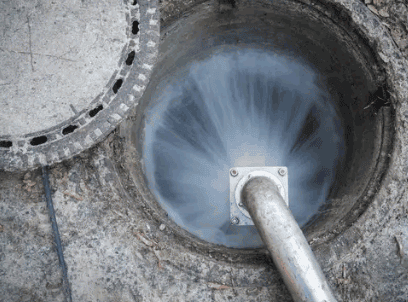
When Should Drain Jetting Be Used?
Drain jetting should be used in various scenarios including severe blockages, regular maintenance, and for ensuring the efficient operation of drain systems in commercial properties.
For Severe Blockages
When facing severe blockages that cannot be removed by conventional methods, drain jetting offers an effective solution by using high-pressure water to break down and clear the blockages.
This process involves a specialised machine equipped with powerful pumps that propel water through a nozzle at high pressure. The force of the water effectively dislodges debris, grease, roots, and other obstructions from within the pipes, ensuring thorough cleaning.
One of the key advantages of drain jetting is its ability to reach deep into the plumbing system, reaching areas that may be inaccessible with other methods. This helps in preventing future blockages and maintaining optimal flow. Drain jetting is environmentally friendly as it does not require the use of harsh chemicals.
For Regular Maintenance
Incorporating drain jetting into regular maintenance routines helps keep pipes clean and free from build-up, thereby preventing potential blockages and ensuring smooth water flow.
A key benefit of drain jetting is its ability to effectively remove accumulated debris, grease, and mineral deposits that can lead to blockages and sewer back-ups. By utilising high-pressure water jets, this method thoroughly cleans the interior walls of pipes, improving their longevity and reducing the chances of costly repairs in the future.
For Commercial Properties
Commercial properties often experience higher usage of drainage systems, making regular drain jetting vital to prevent blockage issues and maintain efficient operations.
In commercial settings, drainage systems are constantly under heavy demand due to the increased footfall and frequent use of facilities. This heightened activity can lead to a build-up of debris, grease, and other substances, causing blockages that can disrupt daily operations and potentially lead to costly repairs. Hence, proactive maintenance measures like drain jetting become essential in ensuring that these properties run smoothly and efficiently.
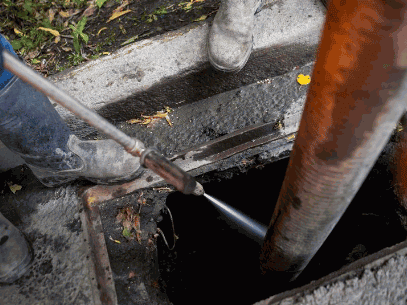
What Are The Safety Precautions For Drain Jetting?
Safety is paramount when performing drain jetting, and it involves several precautions such as wearing protective equipment, undergoing proper training, and ensuring regular equipment maintenance to mitigate any risks.
Protective Gear
Wearing the appropriate protective gear, such as gloves, goggles, and waterproof clothing, is essential for ensuring safety during drain jetting operations.
Sturdy boots with non-slip soles are crucial to prevent slips and fall on wet surfaces.
A hard hat helps protect against head injuries from falling debris or low-hanging obstacles in confined spaces.
Respiratory masks are essential to shield workers from inhaling harmful fumes or chemical vapors that may be present during the cleaning process.

Proper Training
Proper training is crucial for anyone performing drain jetting to ensure they understand the equipment and procedures, with certifications such as those from the Water Jetting Association (WJA) being highly recommended.
In the realm of drain jetting, having the right training can make all the difference in executing the task efficiently and safely. Professionals who undergo comprehensive training are equipped with the necessary knowledge to troubleshoot issues that may arise during the process. This not only ensures that the job is done effectively but also minimises the risks associated with operating high-pressure equipment.
Having certification from reputable organisations like the Water Jetting Association (WJA) serves as a testament to an individual's competence and expertise in the field. It validates their skills and signifies that they have met the industry standards set forth by recognised authorities.
Proper Equipment Maintenance
Regular maintenance of jetting equipment, including the hose system and nozzles, is essential to ensure safe and effective operations during drain jetting.
Keeping the hose system clean and free from debris prevents blockages and ensures a steady flow of water for efficient cleaning. Properly maintaining the nozzles, such as checking for wear and tear and clearing any obstructions, is crucial for achieving optimal water pressure and spray patterns.
Regular inspections help to identify any leaks or damage early, preventing potential accidents and expensive repairs down the line. Lubricating moving parts and replacing worn components are tasks that help prolong the lifespan of the equipment and enhance overall performance.
How Can Someone Prepare For Drain Jetting?
Preparing for drain jetting involves several steps including:
- Clearing the area around the drain
- Informing others in the building
- Following any preparatory instructions provided by the service provider
Clear The Area Around The Drain
Before the drain jetting process begins, it is important to clear the area around the drain to ensure that the technicians have easy access and there are no obstacles in the way.
Removing any objects, such as furniture, vehicles, or debris, that might hinder the movement of equipment is crucial. Clearing the space will allow the drain jetting machines to be positioned effectively, ensuring maximum efficiency during the cleaning process.
- Trimming overgrown vegetation, like bushes or tree branches, near the drain opening can prevent potential blockages or entanglements.
- Keeping pets or children away from the vicinity during drain jetting operations is essential for safety reasons.
Inform Others In The Building
It is essential to inform others in the building about the scheduled drain jetting to ensure that everyone is aware of the procedure and can take necessary precautions.
When everyone in the building is informed about drain jetting, it helps in creating a safe environment by minimising disruptions and ensuring the smooth execution of the process.
To effectively communicate this information, consider sending out a notice through email, posting signs in common areas, or even organizing a brief meeting to explain the procedure and its benefits.
Make sure to highlight the importance of cooperation from all residents or employees to facilitate the efficient completion of the drain jetting task.
Encouraging questions and providing contact information for any concerns can foster a transparent and open communication channel throughout the building.
Follow Any Preparatory Instructions From The Service Provider
Following any preparatory instructions provided by the service provider is crucial to ensure that the drain jetting process goes smoothly and effectively.
These instructions may include guidelines on clearing the area around the drain in question to provide easy access for the technicians. It is essential to remove any obstacles that could hinder the process.
The service provider might advise refraining from using the drain before the jetting takes place to prevent any complications. Properly securing pets or children away from the work area is another important instruction to ensure safety.
The success of the drain jetting service greatly depends on adhering strictly to these preparatory steps.
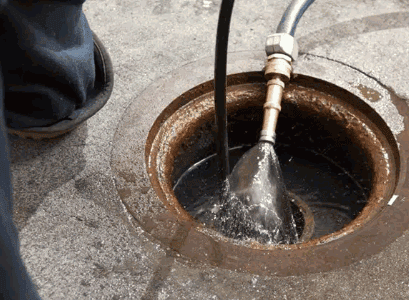
When it comes to keeping your carpets clean and fresh, choosing the right carpet cleaning solution is key.
There are various types of carpet cleaning solutions available, from chemical-based to natural and eco-friendly options. In this article, we will explore these options, factors to consider when choosing one, and even how to make your own DIY solution at home.
We will also highlight some of the best commercial carpet cleaning solutions on the market and provide tips for using them effectively. Whether you're dealing with tough stains or simply looking to maintain your carpets, we've got you covered.
Let's dive in and find the best carpet cleaning solution for your needs!
Explore in-depth: Can You Steam Clean Carpets
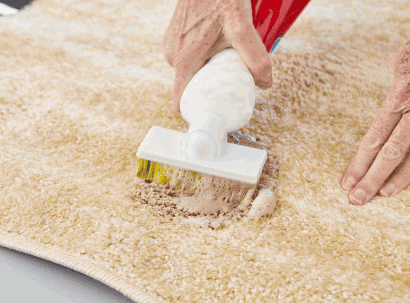
Types Of Carpet Cleaning Solutions
Carpet cleaning solutions come in various types to cater to different cleaning needs and preferences. They can be broadly categorised into chemical-based solutions and natural/eco-friendly solutions.
Chemical-based solutions are typically formulated with strong agents that effectively break down tough stains and dirt embedded in the carpet fibres. These solutions, such as Rug Doctor Carpet Detergent and Vax Ultra+ Carpet Cleaning Solution, are known for their powerful cleaning capabilities, making them ideal for high-traffic areas or carpets with deep-seated grime. On the other hand, natural/eco-friendly solutions are made with biodegradable ingredients that are gentler on the environment and safer for pets and children.
Chemical-Based Solutions
Chemical-based carpet cleaning solutions are formulated with powerful detergents and cleaning agents to effectively tackle tough stains and dirt embedded within the carpet fibers.
One popular chemical cleaner is the VAX Platinum SmartWash, known for its deep cleaning capabilities on various carpet types. Its advanced formula not only removes stains but also eliminates odors, leaving carpets looking and smelling fresh.
- Rug Doctor Deep Carpet Cleaner is another favorite choice among consumers. This solution works by penetrating deep into the carpet pile, lifting dirt and grime to the surface for easy extraction with the machine's powerful suction.
These products are particularly effective in high-traffic areas and stubborn stains like pet messes or food spills. Their versatility makes them suitable for use on most carpet materials, ensuring a thorough and efficient cleaning process.
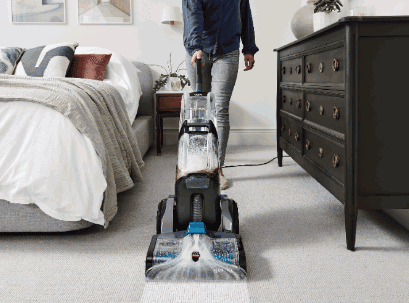
Natural/ Eco-Friendly Solutions
Natural or eco-friendly carpet cleaning solutions offer a greener alternative for cleaning carpets without harmful chemicals. Ingredients like bicarbonate of soda and vinegar are commonly used in these solutions.
These natural remedies not only effectively clean carpets but also help maintain indoor air quality and are safer for pets and children. For example, a mixture of vinegar and water can easily tackle tough stains and odours, while bicarbonate of soda absorbs moisture and deodorises the carpet fibres.
If you prefer ready-made eco-friendly products, options like Dyson Zorb Powder contain plant-based ingredients that are gentle on the environment.
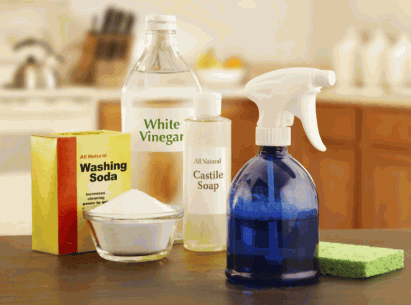
What To Consider When Choosing A Carpet Cleaning Solution?
Selecting the right carpet cleaning solution involves considering factors such as the type of carpet material, the nature of stains, and personal preferences regarding cleaning products.
When determining the appropriate cleaning agent for your carpet, always ensure that it is compatible with the specific material your carpet is made of. For instance, delicate materials like wool may require a gentler solution compared to stain-resistant synthetic fibres.
De-Solv-it Sticky Stuff Glue Residue and Oil Remover is a specialised product that works wonders in removing tough adhesives and oily residues without damaging the carpet fibres.
Carpet Material
Different carpet materials require specific cleaning approaches, with solutions tailored to preserve the quality and appearance of materials like wool carpets or deep-pile carpets.
In terms of wool carpets, it's essential to choose cleaning solutions that are gentle yet effective to prevent damage to delicate fibres. Opting for a pH-neutral cleaner is crucial to maintain the natural properties of wool and avoid shrinking or color fading. For deep-pile carpets, a powerful yet gentle cleaner like the Numatic George GVE 370 can help penetrate through the thick fibers and lift embedded dirt without causing any harm. Understanding the unique care requirements of each carpet material is key to extending their longevity and keeping them looking fresh and vibrant.
Type Of Stains
The nature of stains, whether from pets, food spills, or stubborn residues, influences the choice of carpet cleaning solutions to effectively lift and remove the blemishes.
For instance, pet stains often require enzyme-based cleaners to break down the organic matter and eliminate odours. On the other hand, food spills may respond better to alkaline solutions that help dissolve grease and protein-based stains. When dealing with stubborn residues like ink or wax, solvents designed for specific substances can be highly effective. A product like Dr Beckmann Carpet Stain Remover offers a targeted solution for a variety of carpet stains, making it easier to tackle common household messes.
Personal Preferences
Personal preferences play a significant role in selecting a carpet cleaning solution, with considerations such as user reviews, testing products, and evaluating effectiveness based on individual cleaning needs.
In terms of finding the right carpet cleaning solution, it's not just about blindly following the crowd; it's about understanding what works best for you and your specific requirements.
Choosing a product that aligns with your preferences can lead to more efficient and satisfactory cleaning results.
Experts in the field emphasise the importance of researching and experimenting with different options to find what suits your home best.
Whether you prefer eco-friendly, pet-safe, or heavy-duty formulas, there are numerous carpet cleaning solutions available to cater to various needs. To make an informed decision, consider sampling different products, checking for certifications, and seeking recommendations from trusted sources like consumer reports or professional reviews.
How To Make Your Own Carpet Cleaning Solution?
Creating your own carpet cleaning solution at home can be a cost-effective and environmentally friendly alternative, using common ingredients like vinegar, bicarbonate of soda, washing-up liquid, and hydrogen peroxide.
If you're looking to tackle tough carpet stains and odours, a homemade solution can often be as effective as shop-bought cleaners. For general carpet maintenance, a mixture of water, vinegar, and a few drops of washing-up liquid can work wonders. For grease stains, sprinkle bicarbonate of soda on the affected area to absorb excess oil before applying a solution of vinegar and water. Adding a few drops of essential oils like lavender or tea tree can also leave your carpets smelling fresh and clean. Partnering with cleaning experts can provide additional expert advice on maintaining your carpets naturally.
Vinegar And Baking Soda Solution
A vinegar and bicarbonate of soda solution is a popular DIY carpet cleaning remedy that effectively removes odours and lifts stains from carpets.
To create this natural cleaning solution at home, mix equal parts of white vinegar and water in a spray bottle. Sprinkle bicarbonate of soda liberally over the stained area and then spray the vinegar mixture on top. Let it sit for 5-10 minutes to allow the ingredients to penetrate the carpet fibres.
Next, gently scrub the area with a soft-bristled brush or a clean cloth. The foaming reaction between the vinegar and bicarbonate of soda helps loosen dirt and grime trapped in the carpet.
For tougher stains, you can also add a few drops of washing-up liquid to the solution for extra cleaning power.
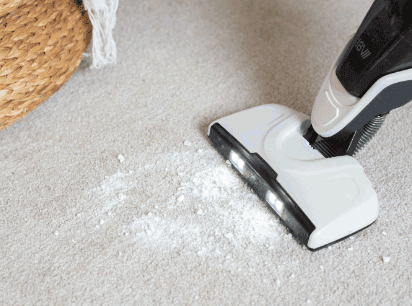
Dish Soap And Water Solution
A washing-up liquid and water solution provides a gentle yet effective method for spot cleaning and maintaining the freshness of carpets.
What makes this cleaning solution so versatile is its ability to tackle common spills and stains without causing damage to the carpet fibers. By mixing a few drops of washing-up liquid with warm water, you can create a solution that is safe for most carpet types.
This DIY mixture is budget-friendly and easy to prepare, making it a convenient option for quick clean-ups. For tougher stains like red wine, consider adding a splash of white wine to the solution for enhanced stain removal.
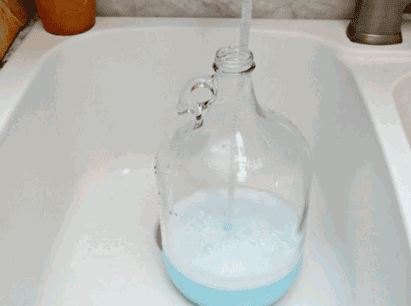
Hydrogen Peroxide And Water Solution
A hydrogen peroxide and water solution is effective for brightening carpets and removing tough stains without leaving behind residue or discolouration.
When combining hydrogen peroxide with water, ensure to use a 3% solution, as higher concentrations can be too strong and may damage the carpet fibres. To create a simple cleaning solution, mix equal parts of hydrogen peroxide and water in a spray bottle.
For added cleaning power, sprinkle a pinch of salt onto the stained area before applying the solution. The salt helps to absorb moisture and lift the stain more effectively.
Before applying the solution to the carpet, do a spot test in an inconspicuous area to check for any adverse reactions. Then, spray the solution directly onto the stain and gently blot with a clean cloth, working from the outer edges towards the centre.
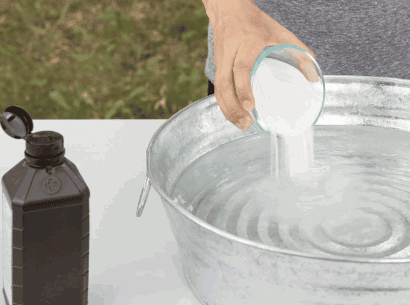
What Are The Best Commercial Carpet Cleaning Solutions?
In terms of commercial carpet cleaning solutions, some top-rated products include the Bissell Deep Clean Pro Carpet Cleaner, the Hoover PowerDash Pet Compact Carpet Cleaner, and the Chem-Dry Carpet Stain Extinguisher.
These products offer advanced features tailored to efficiently tackle tough stains, deeply embedded dirt, and pet odours, leaving your carpets refreshed and rejuvenated. For individuals seeking a more eco-friendly and natural approach to carpet cleaning, opting for alternative cleaning methods such as vinegar and bicarbonate of soda concoction can serve as a gentle yet effective tonic. While commercial solutions may boast powerful formulas, the appeal of DIY remedies lies in their cost-effectiveness and environmental benefits.
Bissell Deep Clean Pro Carpet Cleaner
The Bissell Deep Clean Pro Carpet Cleaner is a professional-grade solution known for its deep-cleaning capabilities and effective stain removal.
One of the standout features of this powerhouse machine is its Heatwave Technology, which maintains a constant water temperature throughout the cleaning process, ensuring optimal cleaning performance.
Users have raved about the Bissell Deep Clean Pro's ability to tackle tough stains, from pet messes to red wine spills, with ease. The CleanShot Pretreater feature allows you to target specific areas with extra cleaning solutions, making light work of even the most stubborn stains.
In terms of different types of carpets, this machine doesn't disappoint. Whether you have plush, high-pile carpets, or low-pile rugs, the adjustable cleaning modes and multiple brush rolls ensure thorough cleaning without damaging delicate fibres.
For those tricky white wine spills or other specific stain challenges, the included professional-grade cleaning formula delivers powerful cleaning results without leaving any sticky residue behind.
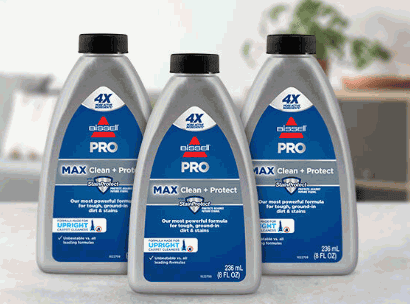
Hoover PowerDash Pet Compact Carpet Cleaner
The Hoover PowerDash Pet Compact Carpet Cleaner is specially designed to tackle pet stains and odours, making it a popular choice for households with pets.
One of the standout features of the Hoover PowerDash Pet Compact Carpet Cleaner is its lightweight and compact design, which allows for easy manoeuvrability around furniture and tight spaces. This makes it an ideal choice for pet owners looking to clean carpets, upholstery, and even car interiors efficiently.
Plus its pet-specific cleaning abilities, the Hoover PowerDash Pet Compact Carpet Cleaner also comes equipped with powerful suction and a dual tank system that separates clean water from dirty water, ensuring a thorough and hygienic cleaning process.
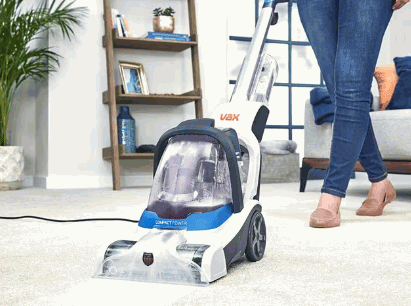
Chem-Dry Carpet Stain Extinguisher
The Chem-Dry Carpet Stain Extinguisher is a targeted cleaning product that effectively eliminates stubborn spot stains with its convenient spray application.
One of the key benefits of this powerful stain remover is its ability to tackle a wide range of stains, ranging from coffee spills to red wine marks. The Chem-Dry Carpet Stain Extinguisher is particularly useful for addressing challenging white wine stains, ensuring that your carpets remain pristine and free of unsightly blemishes.
The ease of application makes it a go-to solution for busy households or commercial spaces that require quick and efficient stain removal. Simply spray the product onto the affected area, let it sit for a few minutes, and then blot away the stain with a clean cloth. No need for extensive scrubbing or harsh chemicals that can damage your carpets!
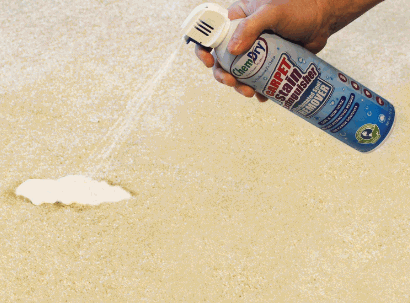
Tips For Using Carpet Cleaning Solutions
To maximise the effectiveness of carpet cleaning solutions and ensure safe use, follow these essential tips that include testing on a small area first, following instructions carefully, and using protective gear.
One effective way to enhance the cleaning process is by incorporating salt into the solution. Salt not only helps to absorb excess moisture but also works as a natural deodoriser, leaving your carpets smelling fresh.
Always remember to vacuum thoroughly before applying any cleaning solution to remove surface dirt and debris, ensuring better penetration of the cleaning agent. It's also crucial to check the compatibility of the solution with your carpet material to prevent any potential damage.
Proper ventilation during and after cleaning is essential to prevent any respiratory issues.
Always Test On Small Areas First
Before applying a new carpet cleaning solution to the entire carpet, it's crucial to conduct a patch test on a small, inconspicuous area to check for any adverse reactions or colour damage.
It may seem like an extra step, but taking the time to patch tests can save you from potential disasters later on. The process involves applying a small amount of the solution to a hidden area of the carpet and observing it for any unwanted effects. This simple test can help you prevent staining, discolouration, or material damage on your entire carpet.
Follow Instructions Carefully
Each carpet cleaning solution comes with specific usage instructions that should be followed carefully to ensure optimal cleaning results and prevent damage to the carpet fibres.
Failure to adhere to these instructions can lead to ineffective cleaning, residue build-up, and even potential discolouration or fibre damage over time.
Experts like home services specialist George GVE 370 emphasise the importance of using the right carpet cleaning solutions in the correct manner to prolong the life and appearance of your carpets.
Use Protective Gear
When handling carpet cleaning solutions, especially chemical-based products, it's essential to use protective gear such as gloves, goggles, and masks to safeguard your skin, eyes, and respiratory system.
Wearing long-sleeved clothing and closed-toe shoes can further protect your skin from potential splashes or spills. White wine or vinegar can act as alternative solutions for stain removal with less harmful effects on your health. Remember to always read the labels and follow the manufacturer's instructions when using cleaning agents. Ensuring proper ventilation in the cleaning area is crucial to prevent the inhalation of fumes. Investing in durable and well-fitting protective gear is a smart choice for long-term safety during carpet cleaning tasks.
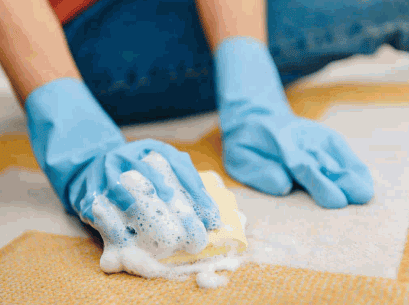
Conclusion: The Best Carpet Cleaning Solution Depends On Individual Needs
The choice of the best carpet cleaning solution ultimately depends on individual preferences, carpet type, stain severity, and desired cleaning outcomes.
When considering carpet cleaning options, it's essential to factor in the specific needs of the space being cleaned. Different carpets require different approaches, whether it's addressing tough stains or maintaining overall freshness. For those looking for advanced cleaning solutions, the Kärcher Spray Extraction Cleaner SE 4001 stands out for its effectiveness and efficiency.
The frequency of cleaning also plays a crucial role in determining the best approach. Regular maintenance may call for a gentler solution, while sporadic deep cleans could benefit from more intensive methods.